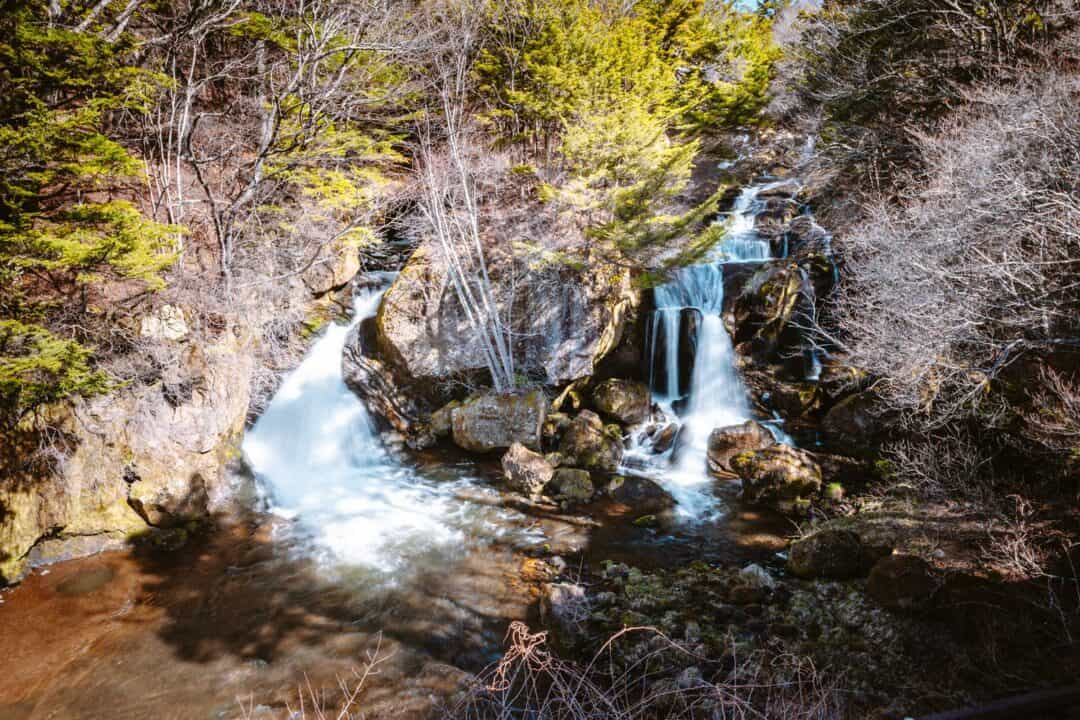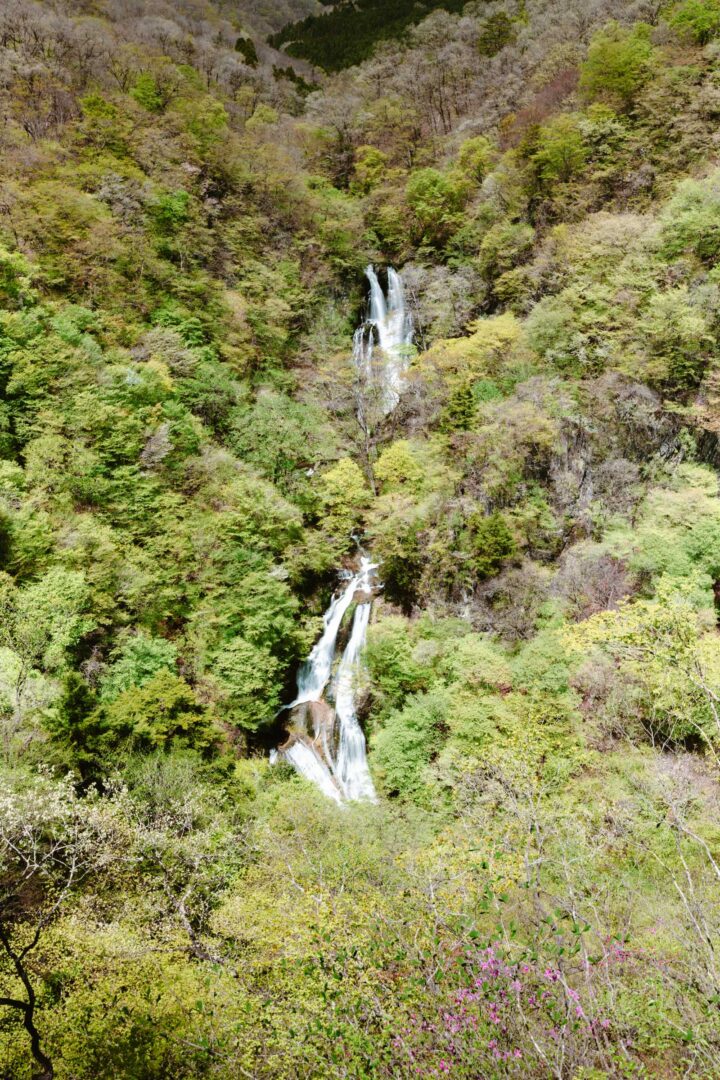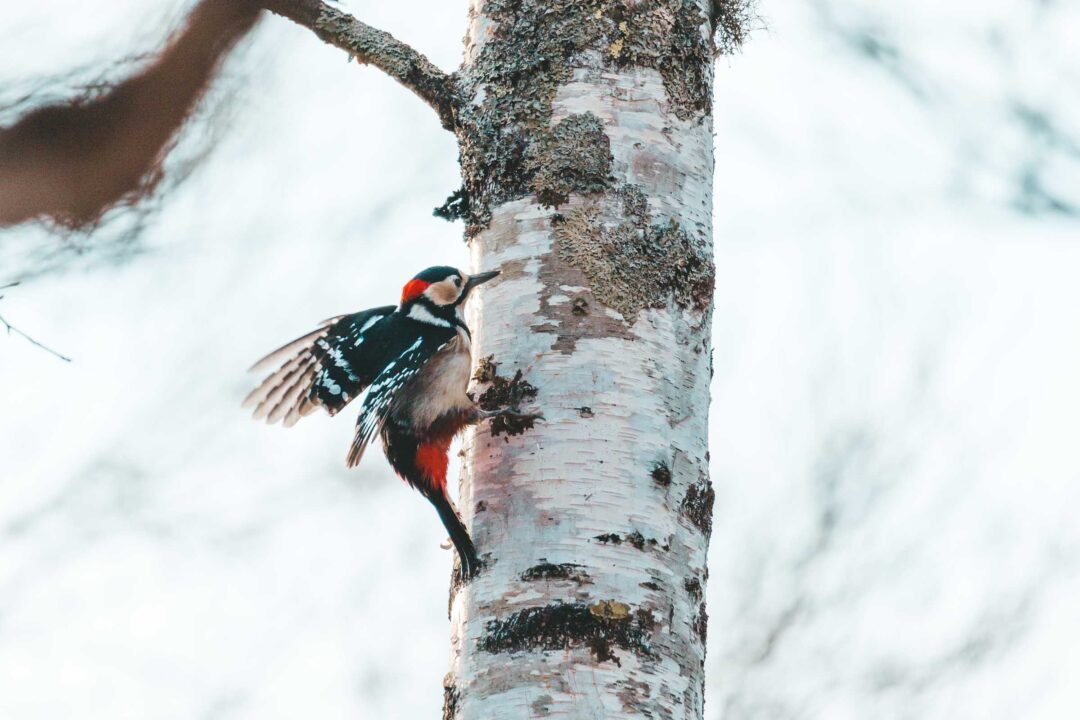When we first planned our trip to Nikko, it was all about visiting the world-famous shrines and temples. And they were every bit as stunning as we’d hoped.
But beyond its cultural history, we found Nikko to have a whole world of adventure. We hiked up volcanic mountains, chased waterfalls, drove winding mountain roads, and even stepped back in time at Edo-period recreations.
We visited Nikko in Japan for 5 days and found there’s so much to do that it’s impossible to see it all in just one trip. Whether you’re planning a quick day trip from Tokyo or a longer stay to fully explore the area, Nikko has something for every traveler.
In this guide, we’ll share everything you need to know about visiting Nikko, including what to do, where to go, and how to make the most of your time in this Japanese mountain town!
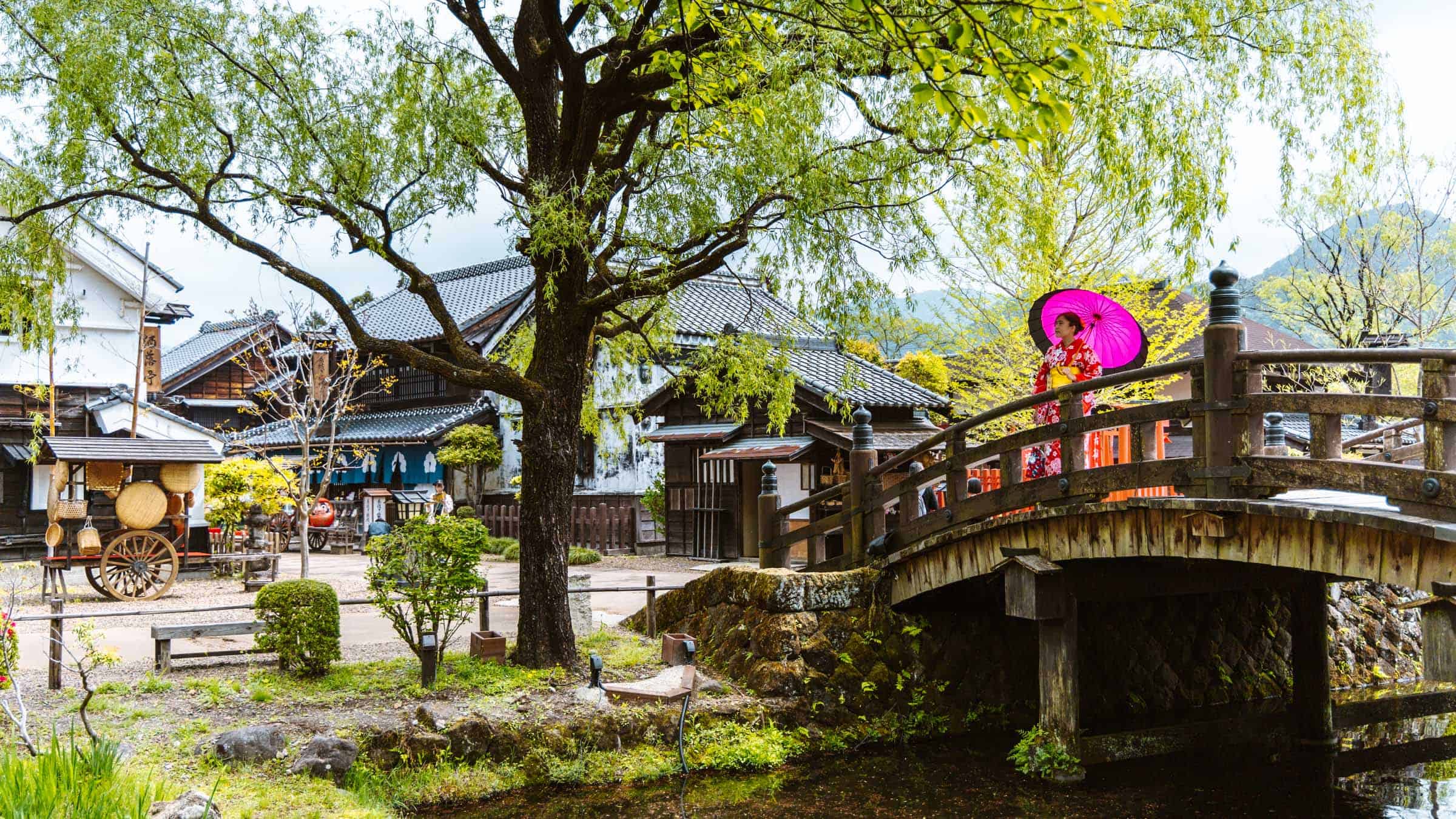
18 Incredible Things to Do in Nikko
World Heritage Shrines and Temples of Nikko
The World Heritage Shrines and Temples are the focal point of Nikko, as they are a UNESCO World Heritage site and without a doubt some of the most spectacular buildings in the entire country.
The site includes 103 UNESCO-registered structures, including the final resting place of Tokugawa Ieyasu, the founder of the Tokugawa Shogunate.
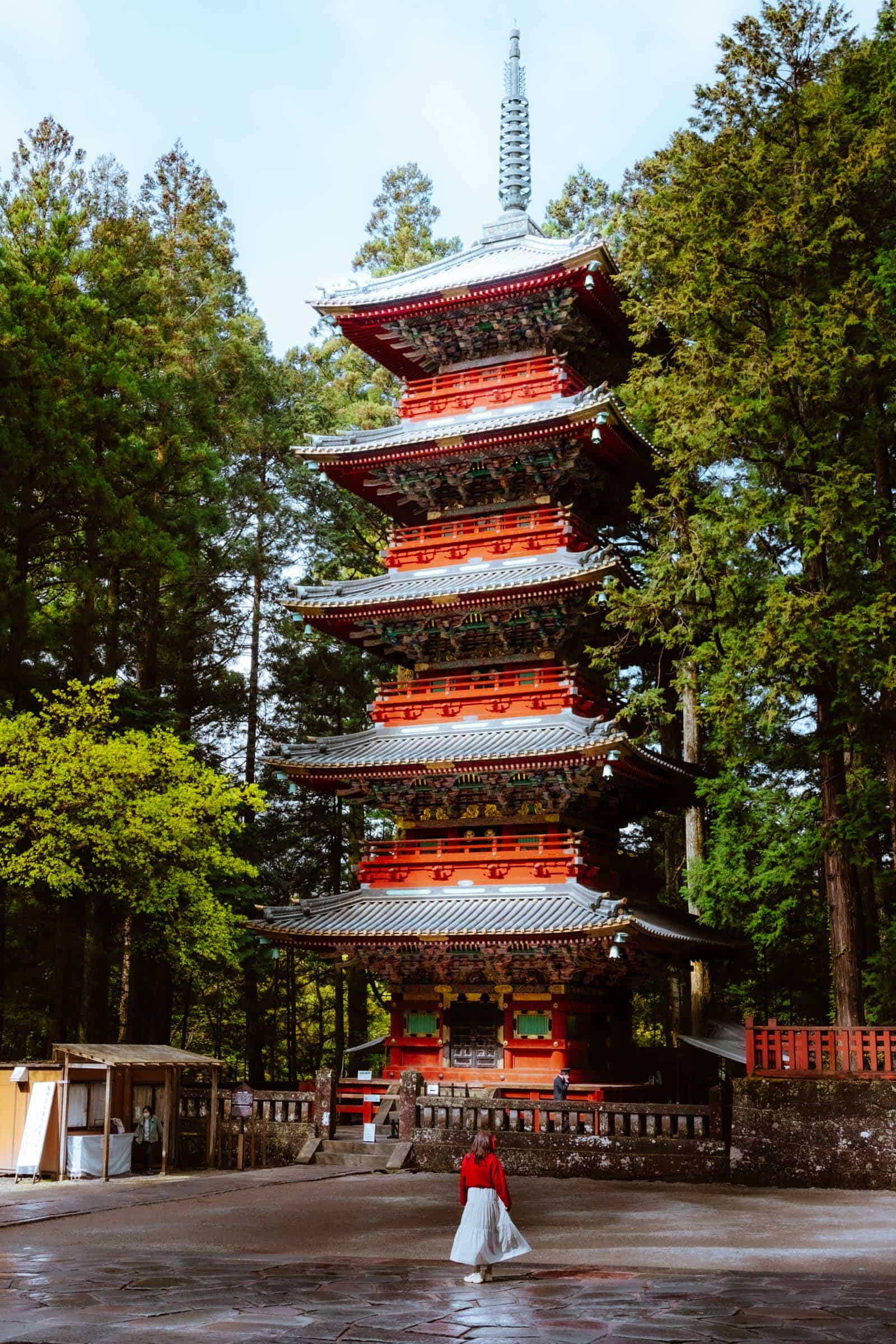
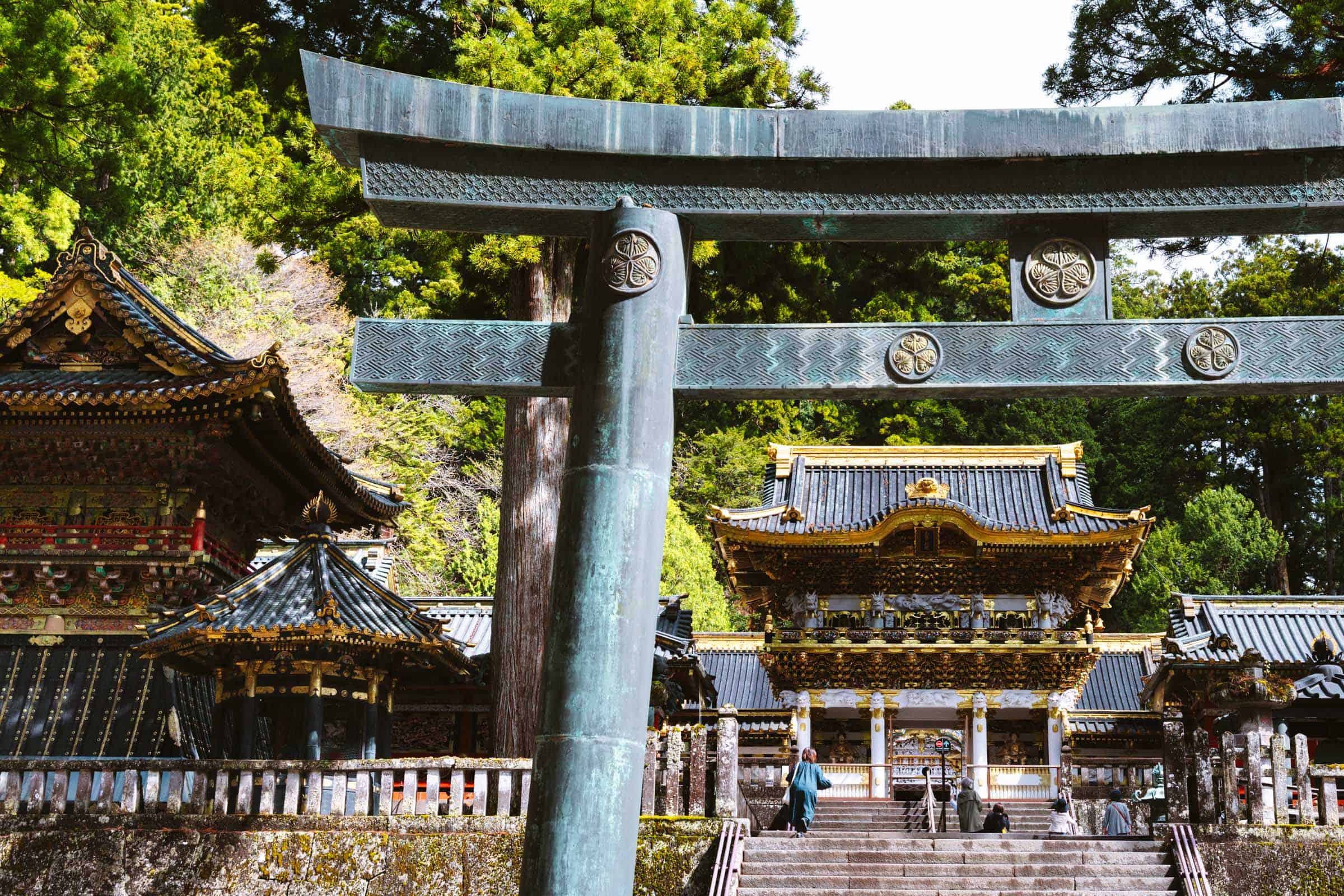
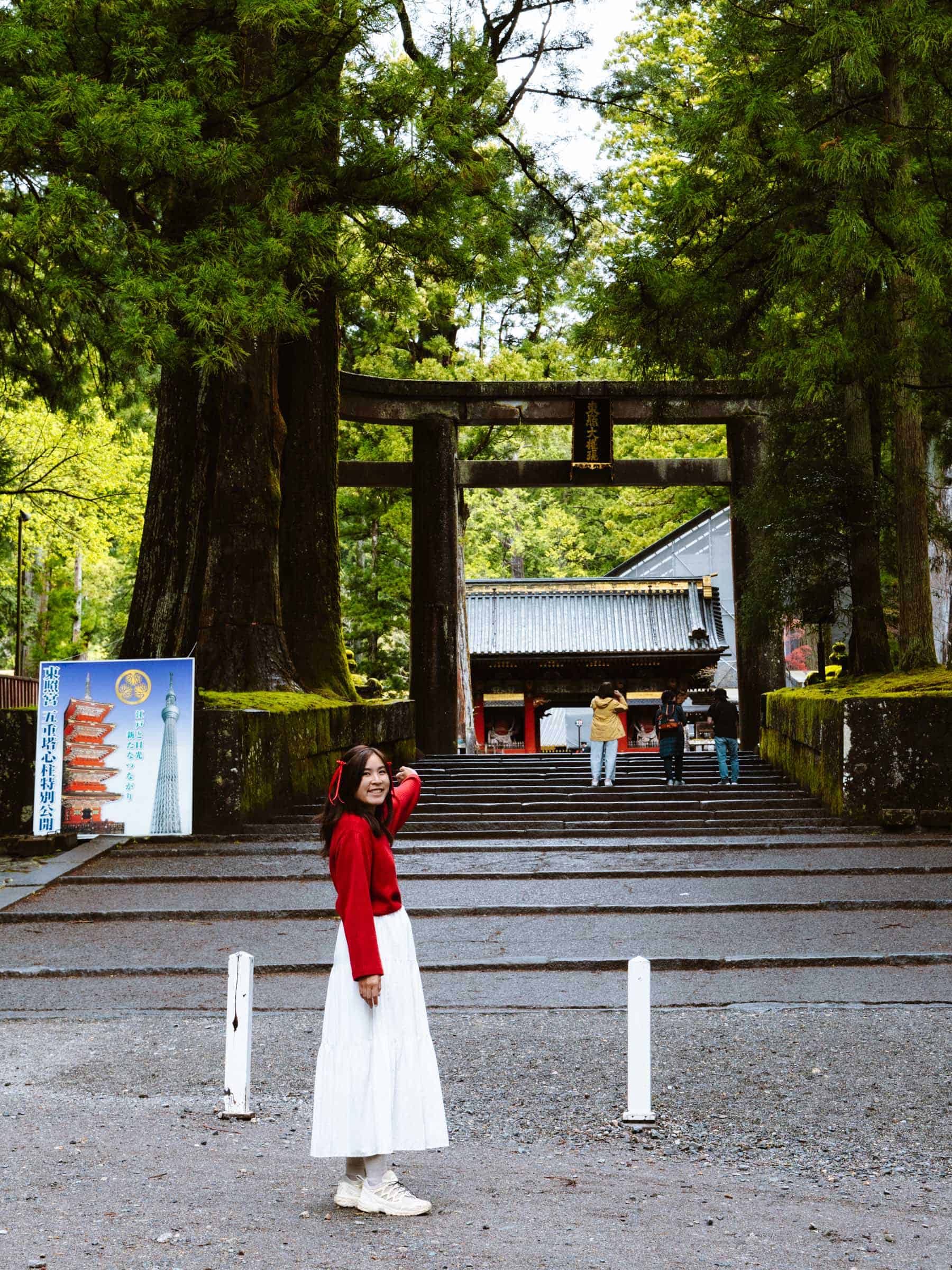
Rather than diving into details about each building, I recommend using the World Heritage Shrines and Temples of Nikko brochure as your guide. It’s the same guide we used during our visit, and it has just enough information to help you on your visit, but not too much to overwhelm you. The brochure includes maps and suggested walking routes, so it’s super useful to help guide you on your journey around the complex.


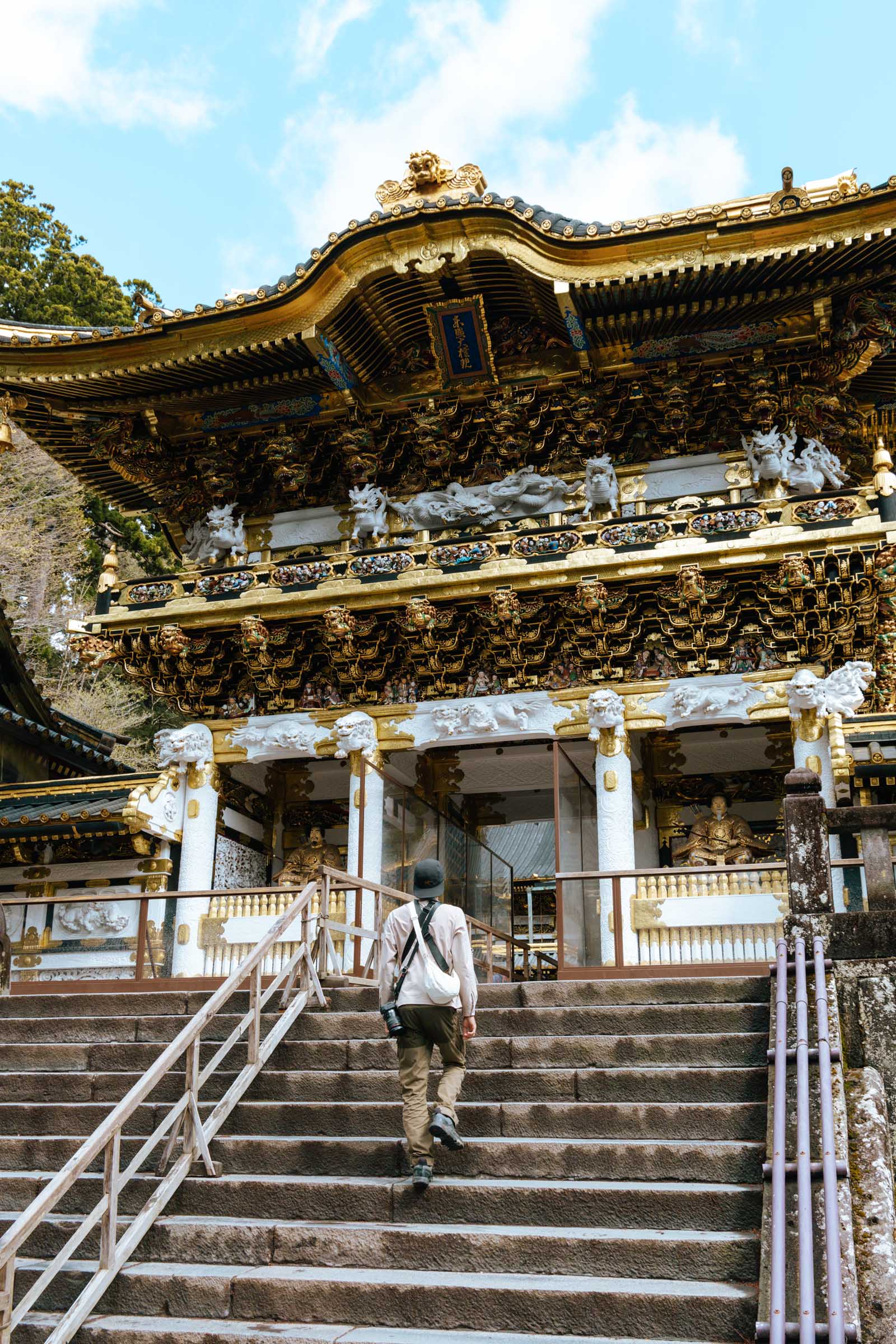
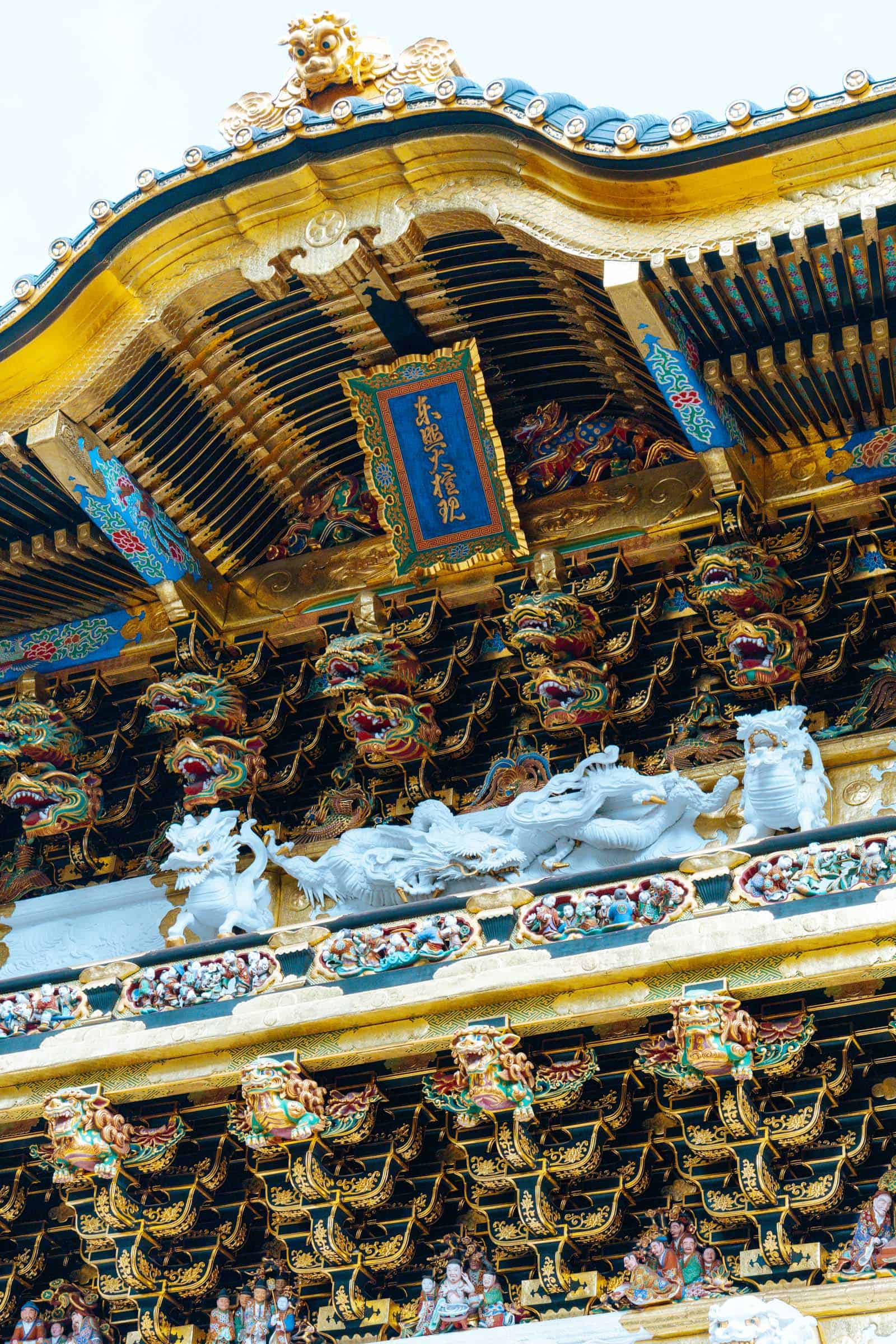
Kanmangafuchi Abyss
Kanmangafuchi Abyss is one of the stranger places we’ve visited, but it’s seriously so Japan. It’s located in the back of a neighborhood, and it’s a quiet change of pace from the other, more crowded tourist sites in Nikko.
The abyss is a volcanic gorge with a river rushing through it, but what really makes it special are the rows of stone Buddha statues along the riverside.
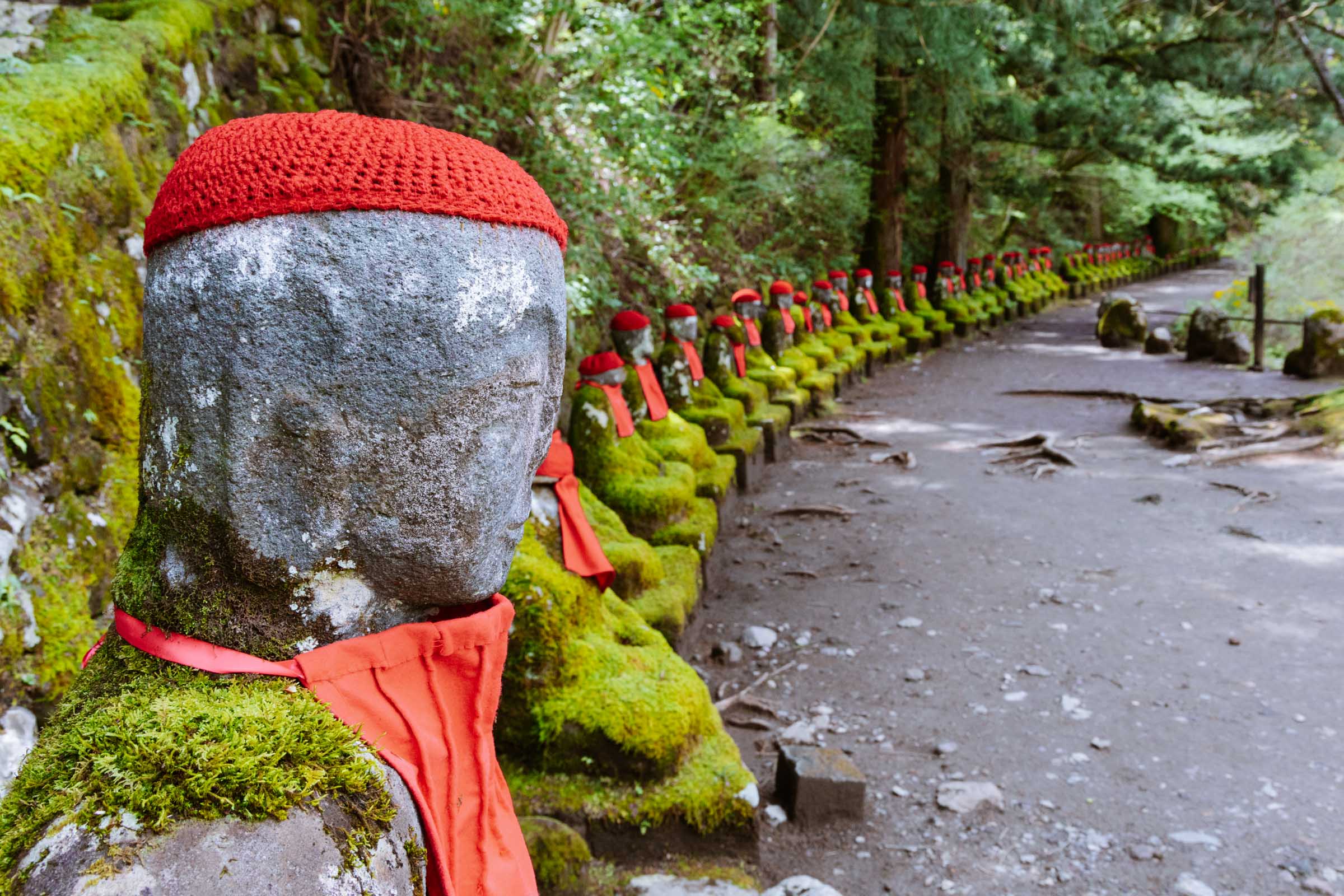
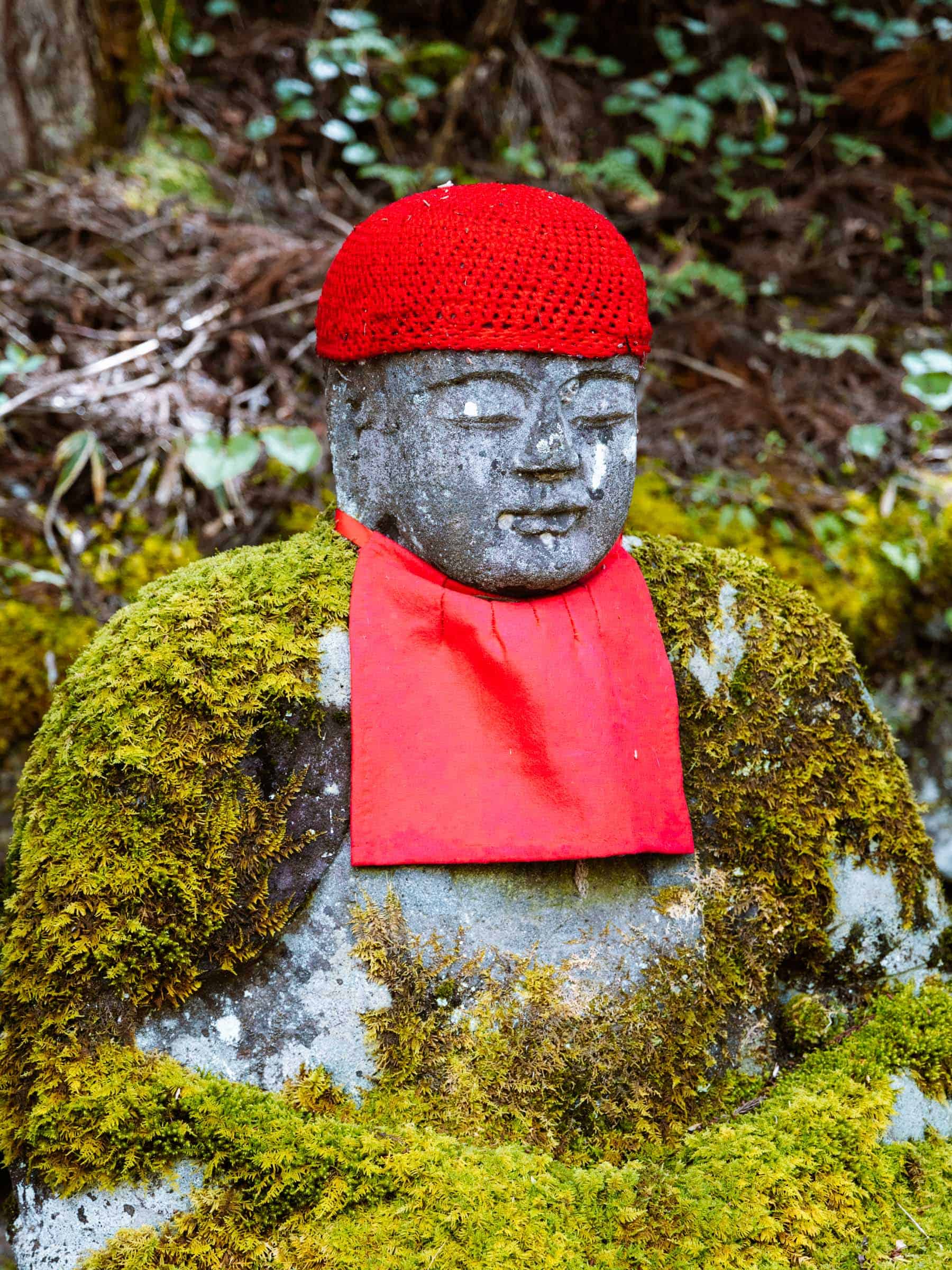
These aren’t ordinary statues… they’re dressed in adorable handmade red bibs and hats! It’s one of the cutest things we’ve ever seen, and we couldn’t help but wonder who took their time to craft these tiny outfits for the Buddhas.
Here’s a fun legend about the statues: supposedly, there are around 70 of them, but the number changes every time you try to count! Chloe and I tried counting and got different results. She counted 70, but I got 71. Maybe you’ll have better luck figuring it out!
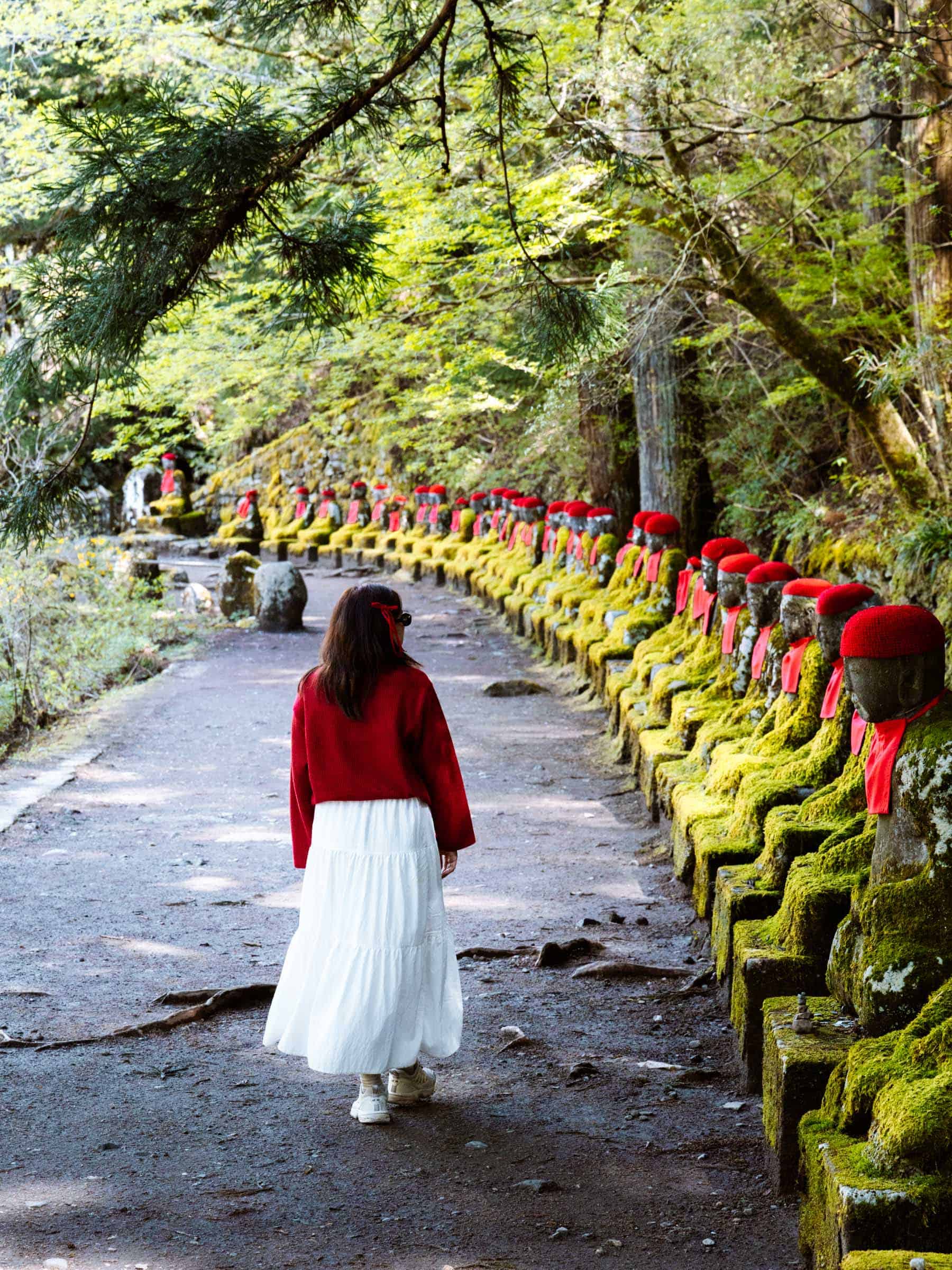
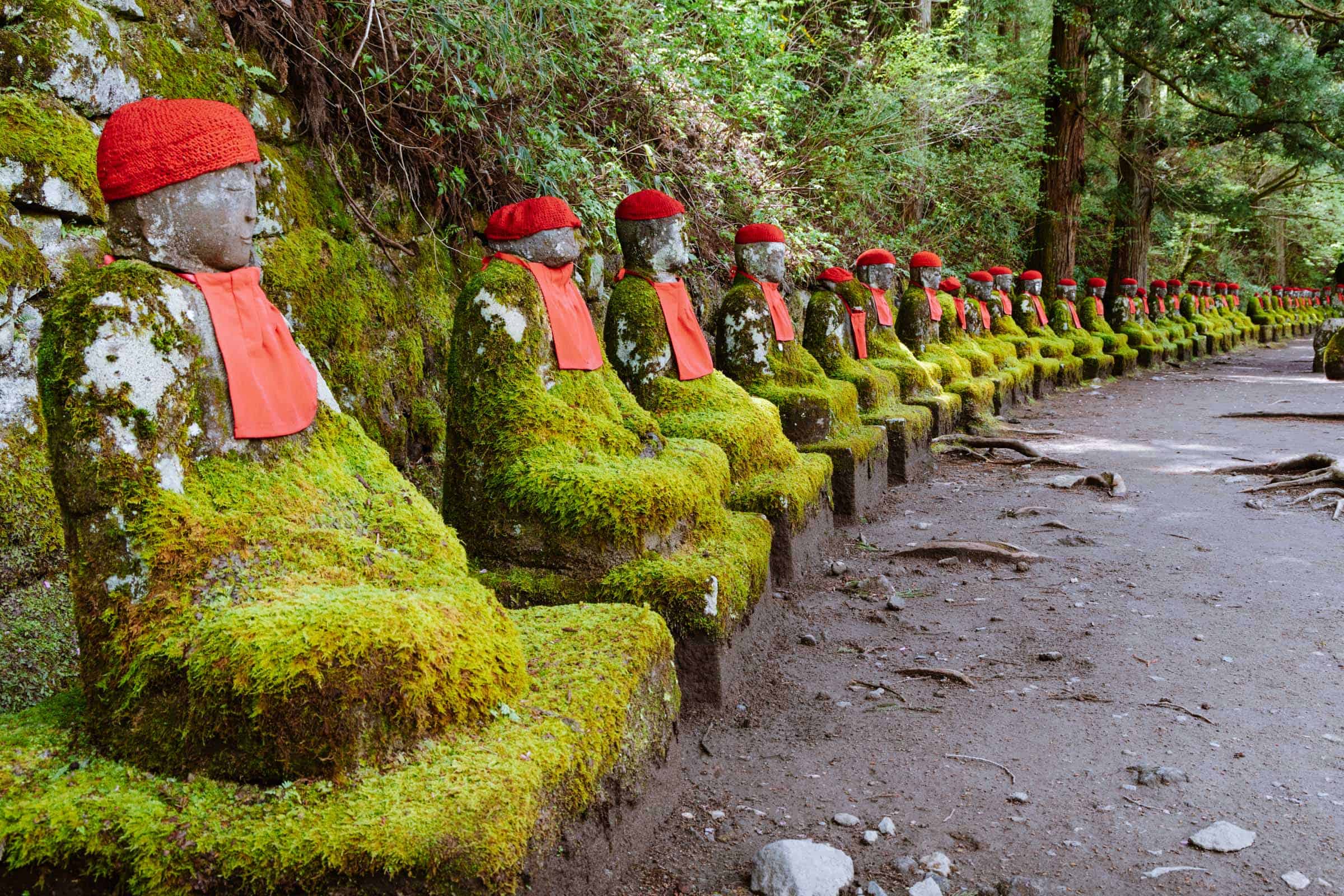
Our Free Nikko Google Maps Locations
Do you need a handy map with all our Nikko locations? We’ve got a Google Map with all the Nikko locations in this post (plus a LOT more). Sign up in the box below and we’ll deliver it right to your inbox, plus our top tips to help you plan your Nikko adventure.
Nikko Tamozawa Imperial Villa
Nikko has long been a retreat for Japan’s royalty and a place of historical significance. It’s the final resting place of Tokugawa Ieyasu, founder of the Tokugawa Shogunate, and a destination where Japan’s royal family would make spiritual pilgrimages to pray for the nation’s prosperity.
Even foreign diplomats visited Nikko frequently, and by the mid-1800s, Japan’s Foreign Affairs Office reportedly relocated there during the summer months.


In 1899, the Nikko Tamozawa Imperial Villa was built as a summer residence for Prince Yoshihito, the Taisho Emperor. This building is the largest wooden structure of Japan’s imperial villas and blends Western and Japanese architectural styles.
During World War II, the villa served as a safe hideout for the emperor but was abandoned shortly afterward. Thankfully, it was restored and reopened as a museum in 2000, which you can visit today.


When we walked through the villa, we were enamored by its intricate traditional design and pristine condition. Beyond the villa, the surrounding gardens were equally charming. A stream flows through the garden behind the property, and a peaceful walking path encircles the residence. Chloe found plenty of inspiration for our future home!


Shinkyo Bridge
The Shinkyo Bridge is one of Nikko’s most iconic landmarks. It’s a bright red bridge located at the entrance to the World Heritage Shrines and Temples of Nikko. It’s often the first stop for people exploring the area.
The bridge was built in 1636, and for many centuries, only the highest-ranking officials were allowed to cross it. Nowadays, the bridge is open to everyone, and you can pay a fee to enter and walk on the bridge.
When we visited Shinkyo Bridge early in the morning, it was not open yet, but we still enjoyed an excellent view of it from the nearby sidewalk. If you’re not interested in crossing the bridge, you can still appreciate its beauty without paying the fee.
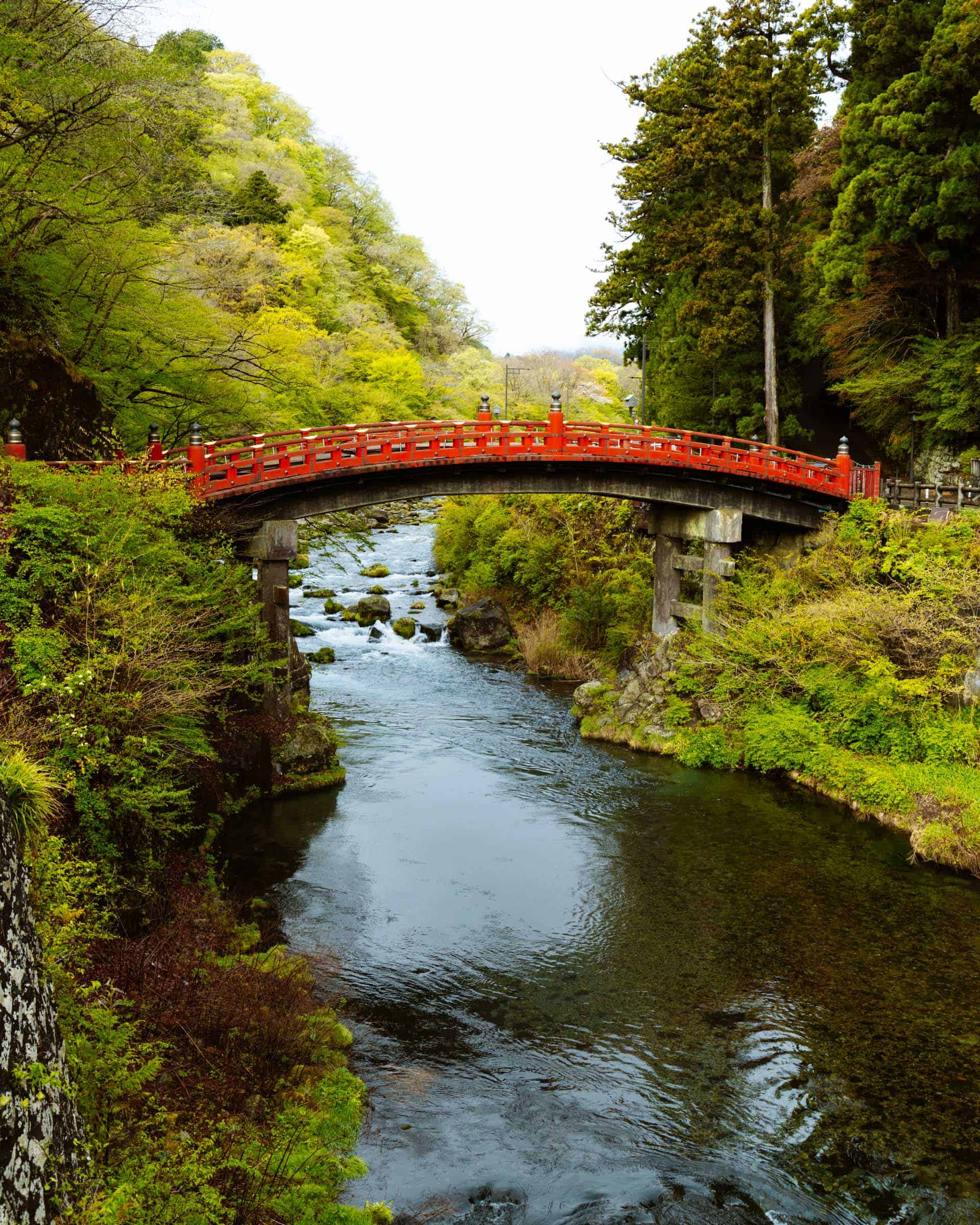
Edo Wonderland
Edo Wonderland is a faithful recreation of Edo-period Japan, complete with samurai and ninjas, in a postcard town made of wooden buildings amongst the mountains of Nikko. I’m the first one to shy away from theme parks, but Edo Wonderland is a place that I couldn’t stop talking about after we visited!

When we walked into Edo Wonderland, the first thing we came across was a costume shop where you could rent a costume and get in character for the day. Of course, you can pick something cool like a princess or samurai, but I thought it was neat that you could also be something more ordinary, like a farmer or merchant.
The park encourages you to step into the shoes of someone from 17th-century Japan, not just watch from the sidelines. Chloe rented a town lady outfit so she was ready to walk the streets of Edo-era Japan!
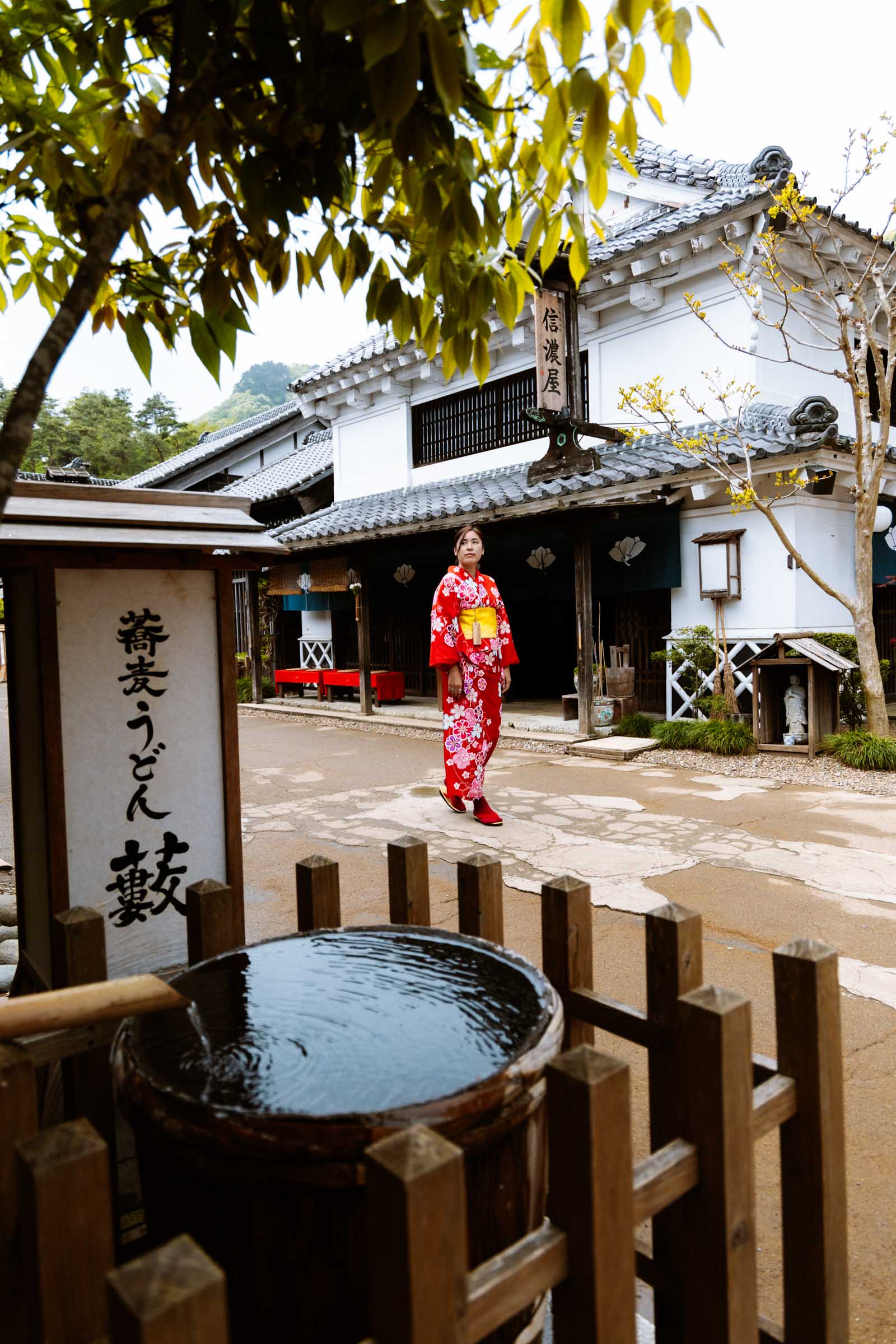
Throughout the day, there are various events and shows at Edo Wonderland. We attended all of them. Our favorites were the Ninja Show and the Courtesan Show. Even though the shows were spoken in Japanese, we still found them incredibly entertaining. The energy and costumes made it enjoyable, even if we couldn’t fully understand the dialogue!
The town also has a parade that winds through the town once a day, featuring many of the characters from around the park.
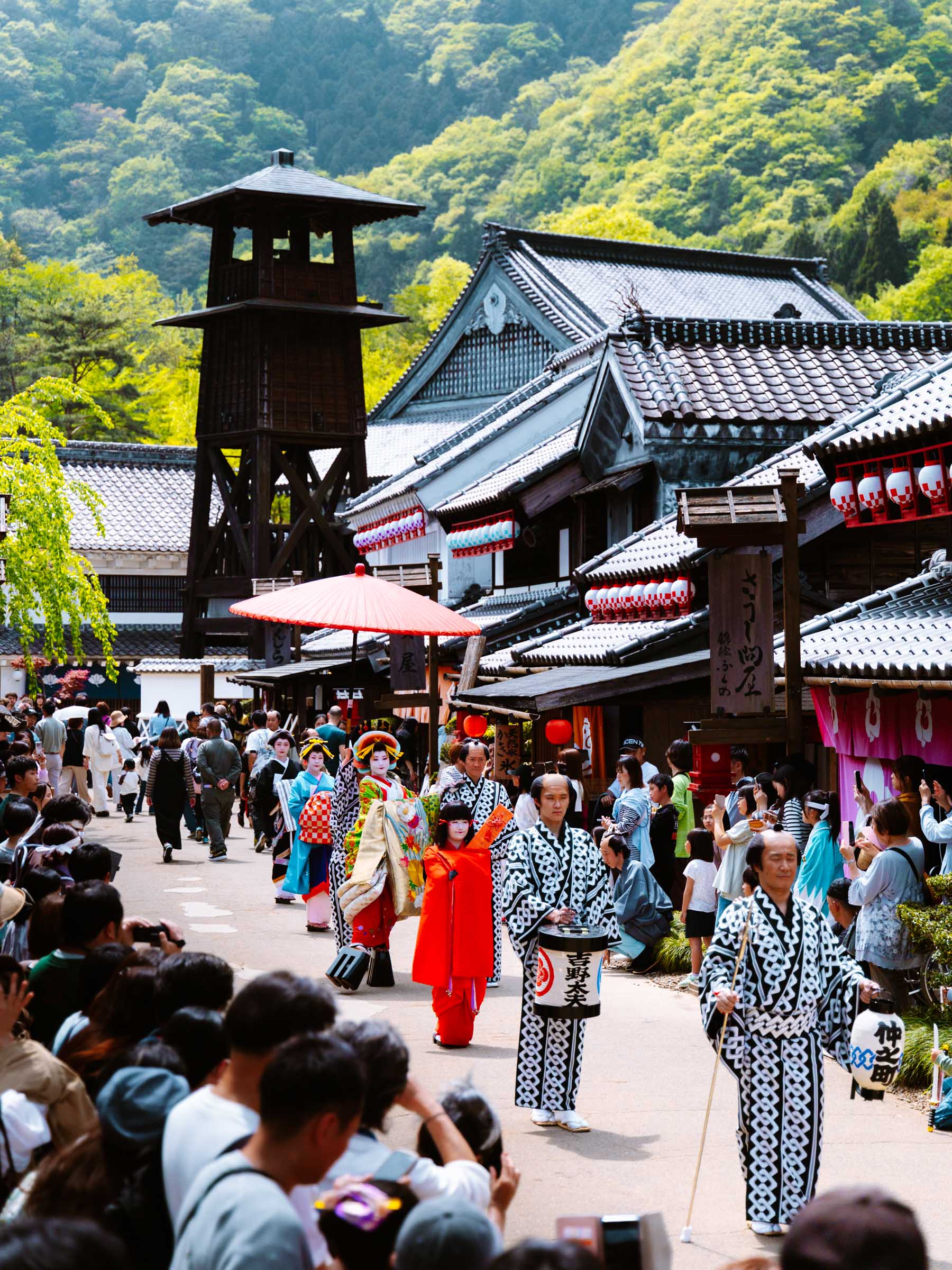
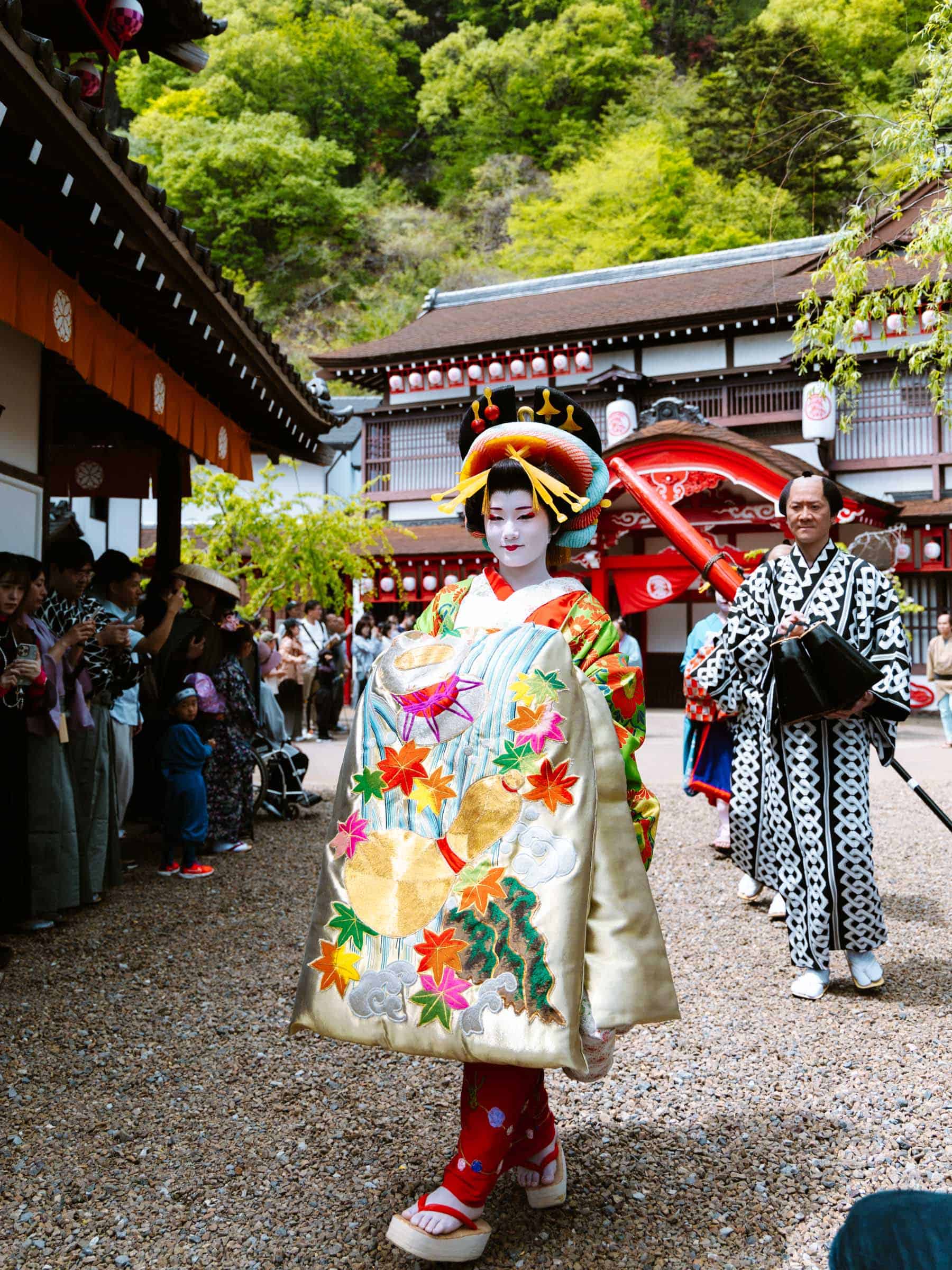
Irohazaka Winding Road
Nikko’s central area connects to Lake Chuzenji by the Irohazaka Winding Road. This famous mountain road contains 48 sharp hairpin turns and consists of two separate roads: one for going up and another for going down the mountain.
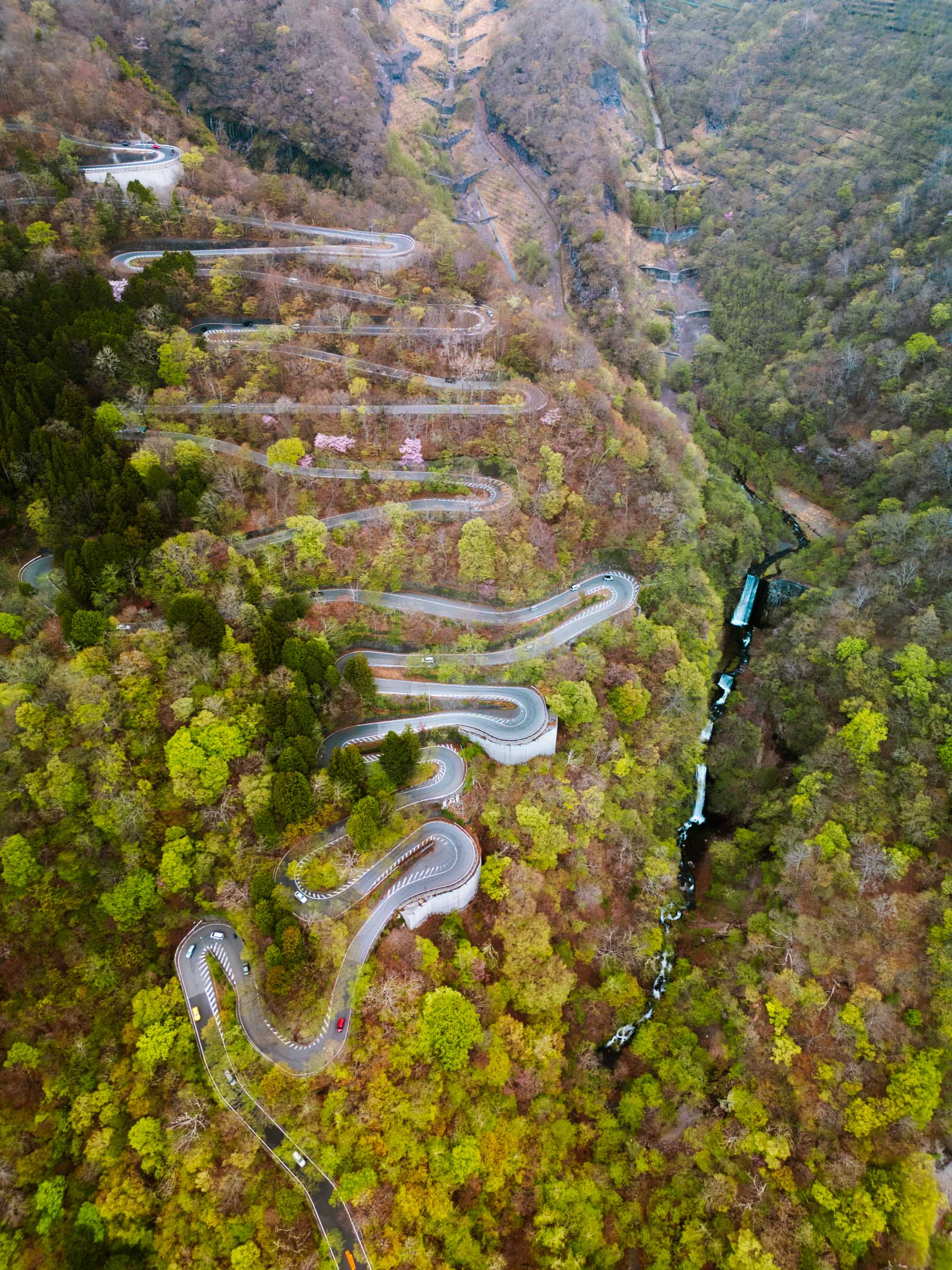
Along the route, you’ll find pull-offs and observation areas on both sides, perfect for taking a break from driving to admire the views.
Since the Irohazaka Winding Road is the main path from Nikko to Lake Chuzenji, it doesn’t exactly need to be a separate stop on your itinerary. You’ll pass through it on your way to and from the lake.
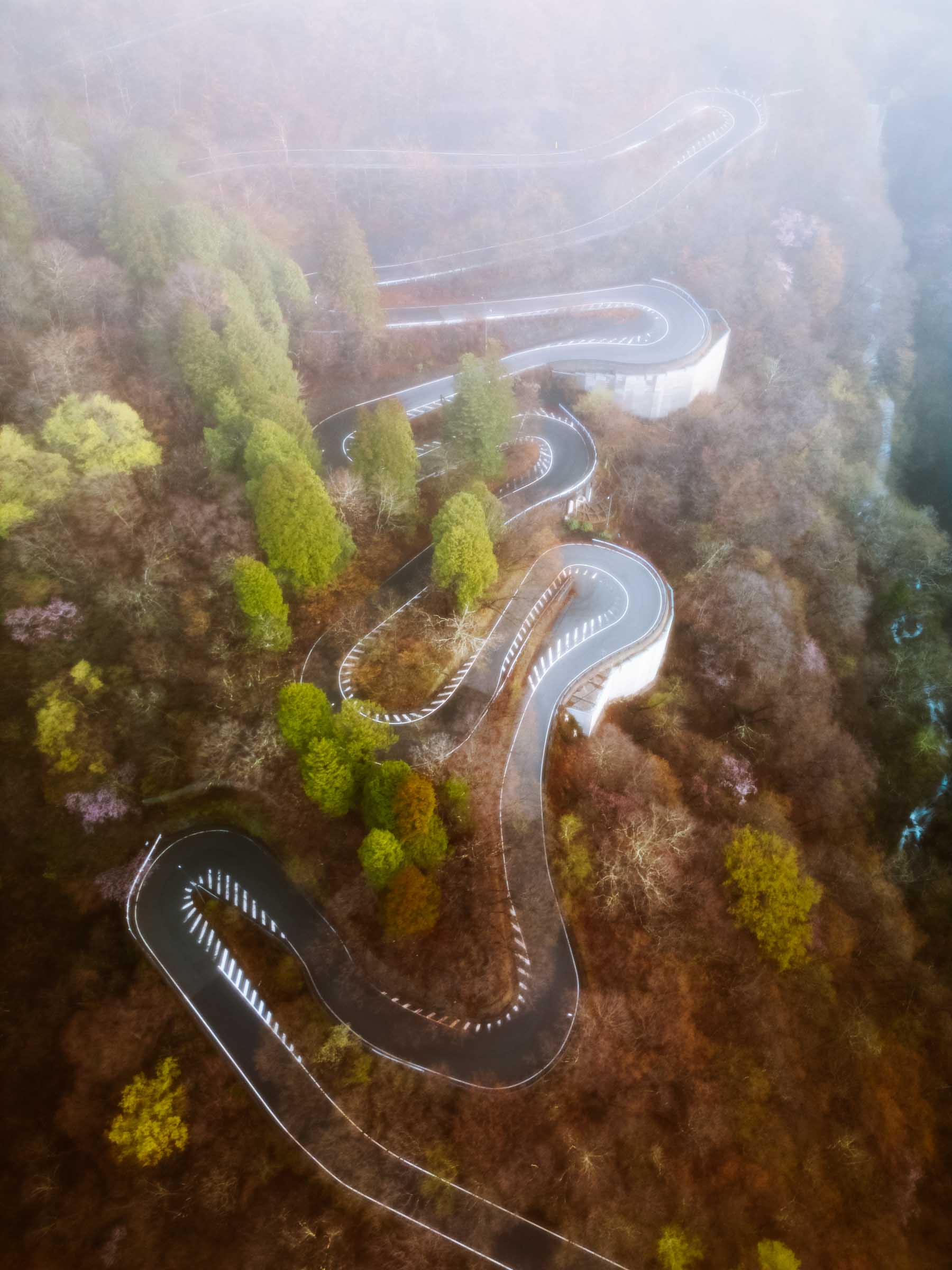
The Irohazaka Road plays an integral part in the anime Initial D. It is the home course of Team Emperor as well as Kai Kogashiwa and his father, Ken. The Irohazaka Road is where Ken taught Kai how to jump over the hairpin turns for a race!
One of the road’s most unique features is its “musical road” section. As we drove downhill, we noticed a sign indicating music ahead. At first, we were confused, until we went over small ridges in the road that created a melody as our car drove over them! The ridges are spaced out in such a way that they create distinct musical notes, and they all come together to make a song.
Kegon Waterfall
Kegon Waterfall is a massive waterfall that plunges 97 meters from Lake Chuzenji into the Daiya River below. It is the most famous waterfall of Nikko, and is also considered one of the ‘Three Great Waterfalls of Japan’.
There are a couple of ways to enjoy Kegon Waterfall. The most straightforward way is to head to the observation deck, which overlooks the falls from above. If you want to get a closer look at the falls, you can take an elevator (for a small fee) down to the base of the waterfall.


When we visited in April, Kegon Waterfall did not flow for most of the time we were there. It turns out that the flow of Kegon Waterfall depends on the water level of Lake Chuzenji. The waterfall wasn’t flowing due to the low water level of the lake. But then on our final day, the falls began to flow again! But only slightly. Keep this in mind if you visit during the spring season!
Mount Nantai Hike
Mount Nantai is the volcano overlooking Lake Chuzenji in Okunikko. While it might look smaller from a distance, don’t let the mountain’s appearance fool you. We quickly discovered that it’s a challenging hike!
The hike begins at the Futarasan-jinja Shrine Chugushi and takes you up a steep trail marked by nine Shinto stations. These stations, featuring small shrines, stone markers, or torii gates, add a cultural touch to the hike. Be prepared for a tough ascent, as the trail goes straight up the mountain for most of the hike.
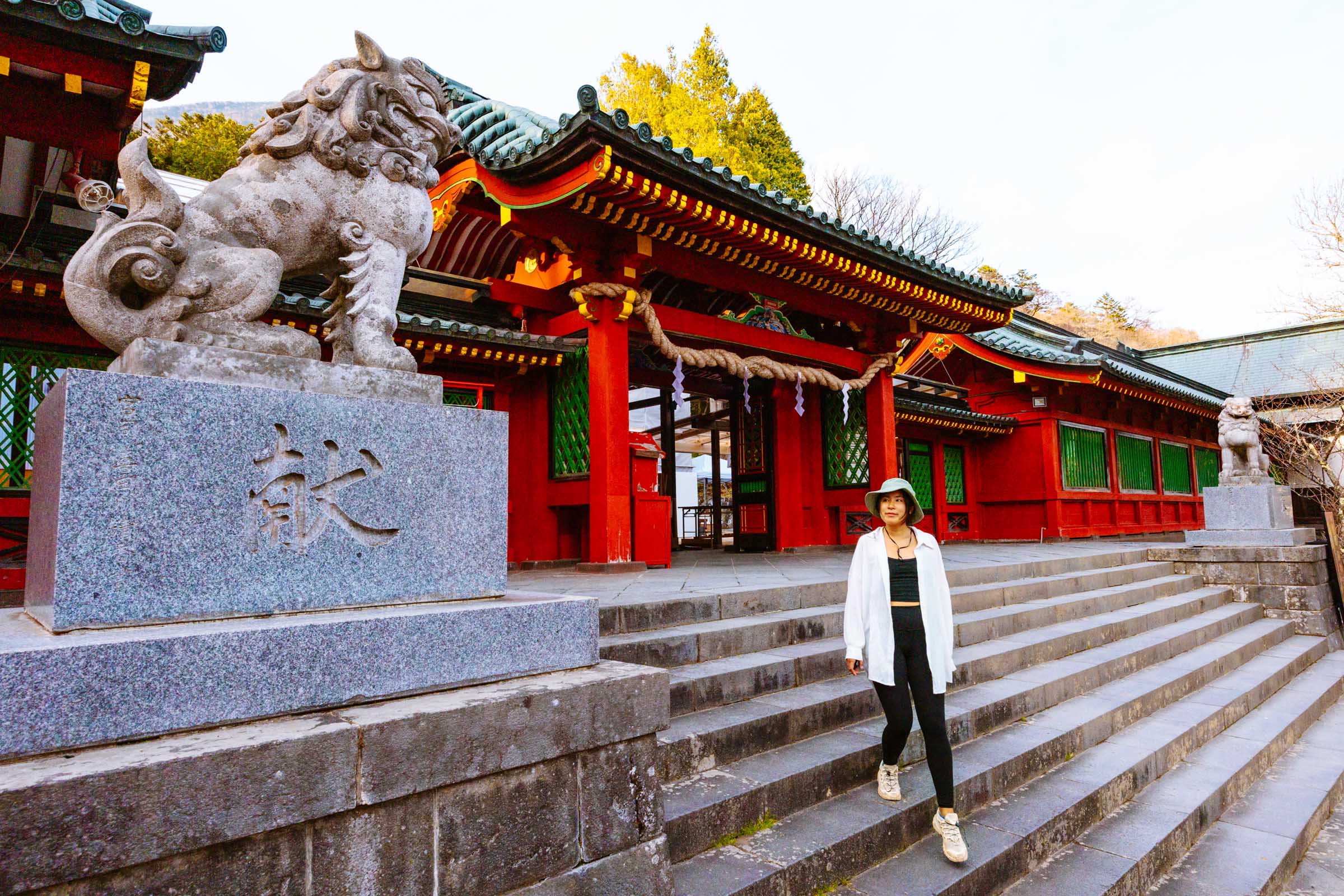
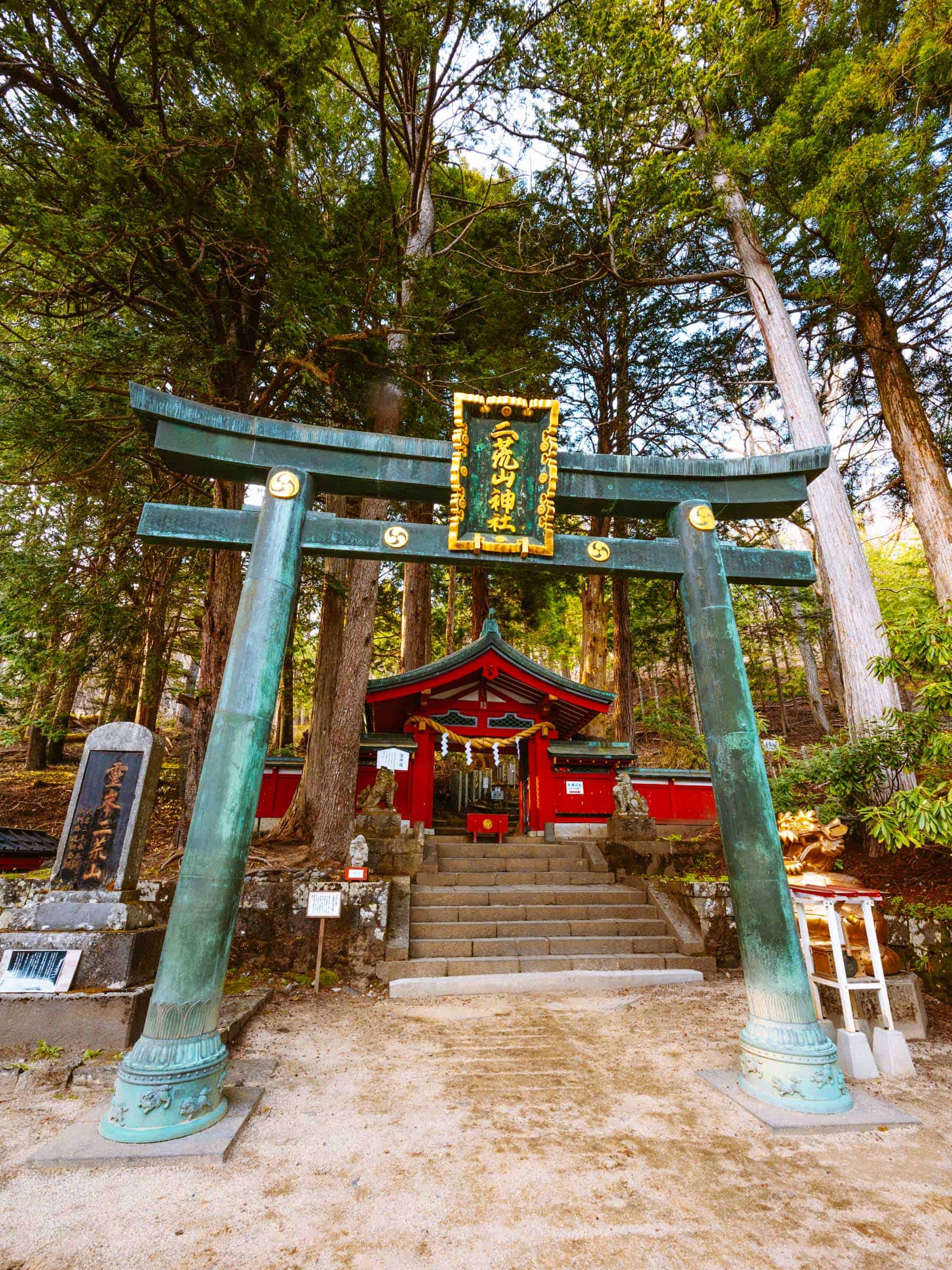
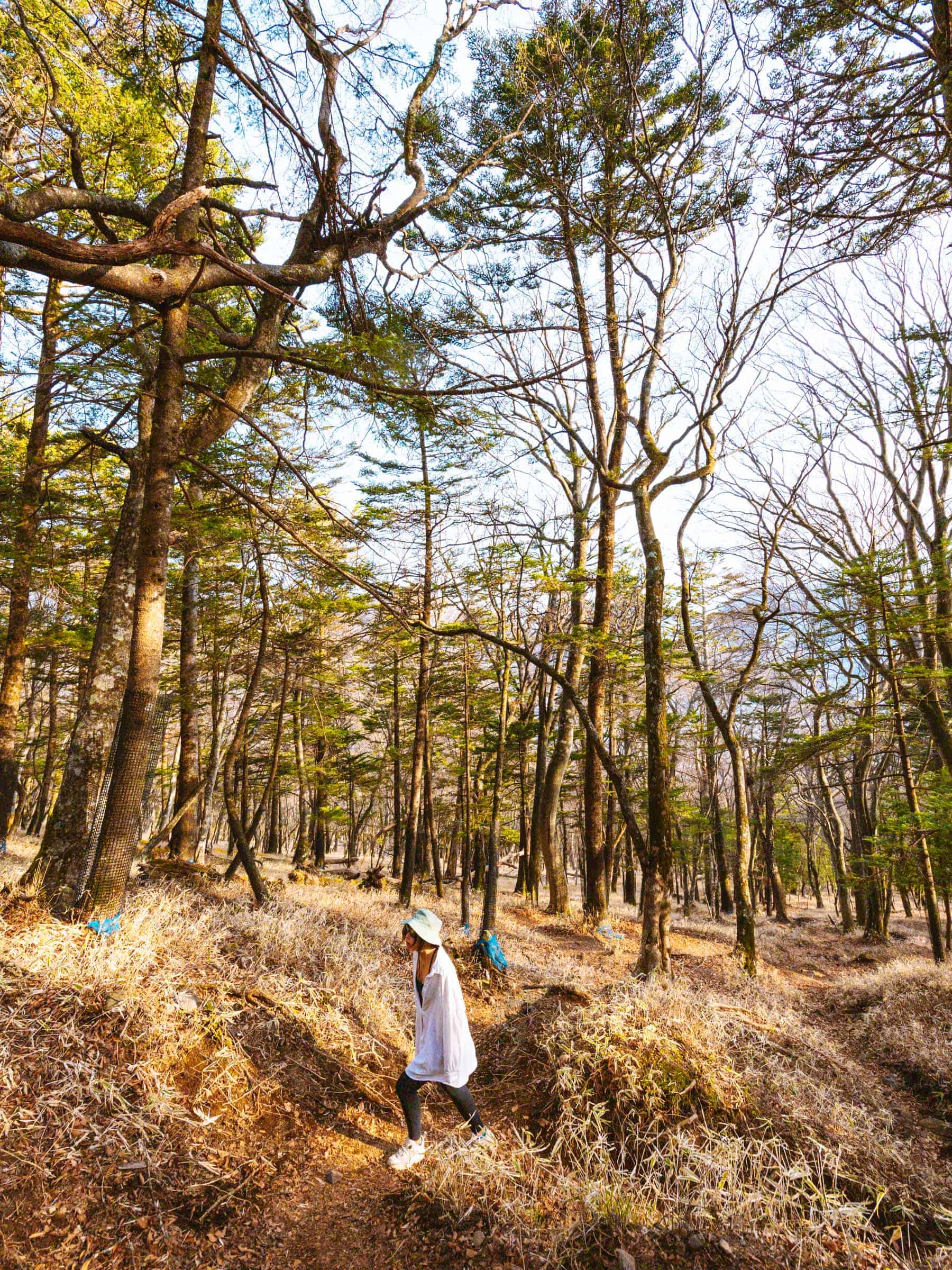
If you’re planning to tackle Mount Nantai, start early in the morning to give yourself enough time to complete the hike and enjoy the incredible views at the top. We started in the afternoon and only made it to the fourth station, but it was still an exciting adventure to explore the mountain and take in its surroundings.
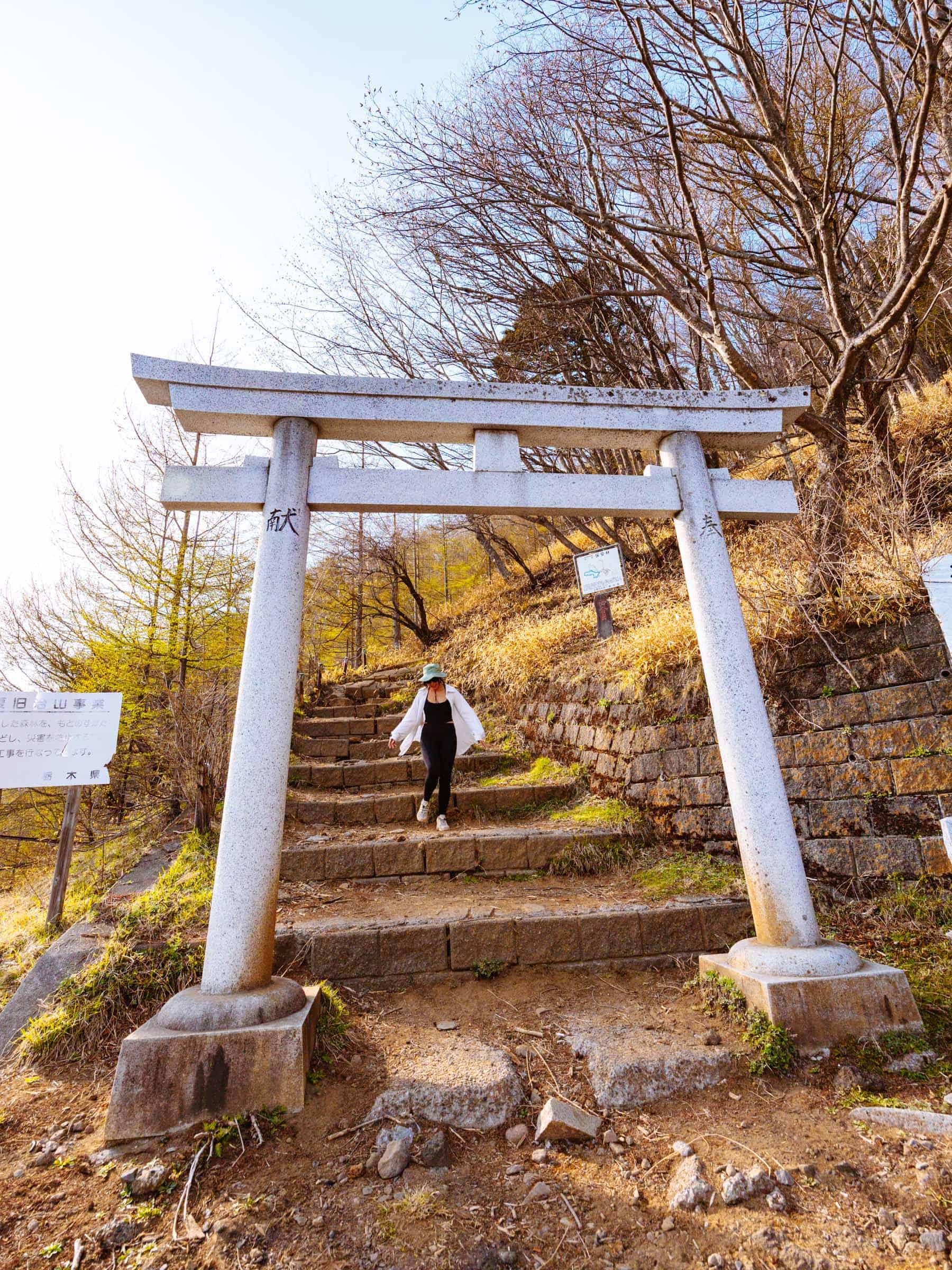

Senjogahara Marshland Hiking
The Senjogahara Marshland is a fantastic day trip destination from Nikko. Formed by the eruption of Mount Nantai, the area originally held a lake that gradually transformed into a marsh over time.
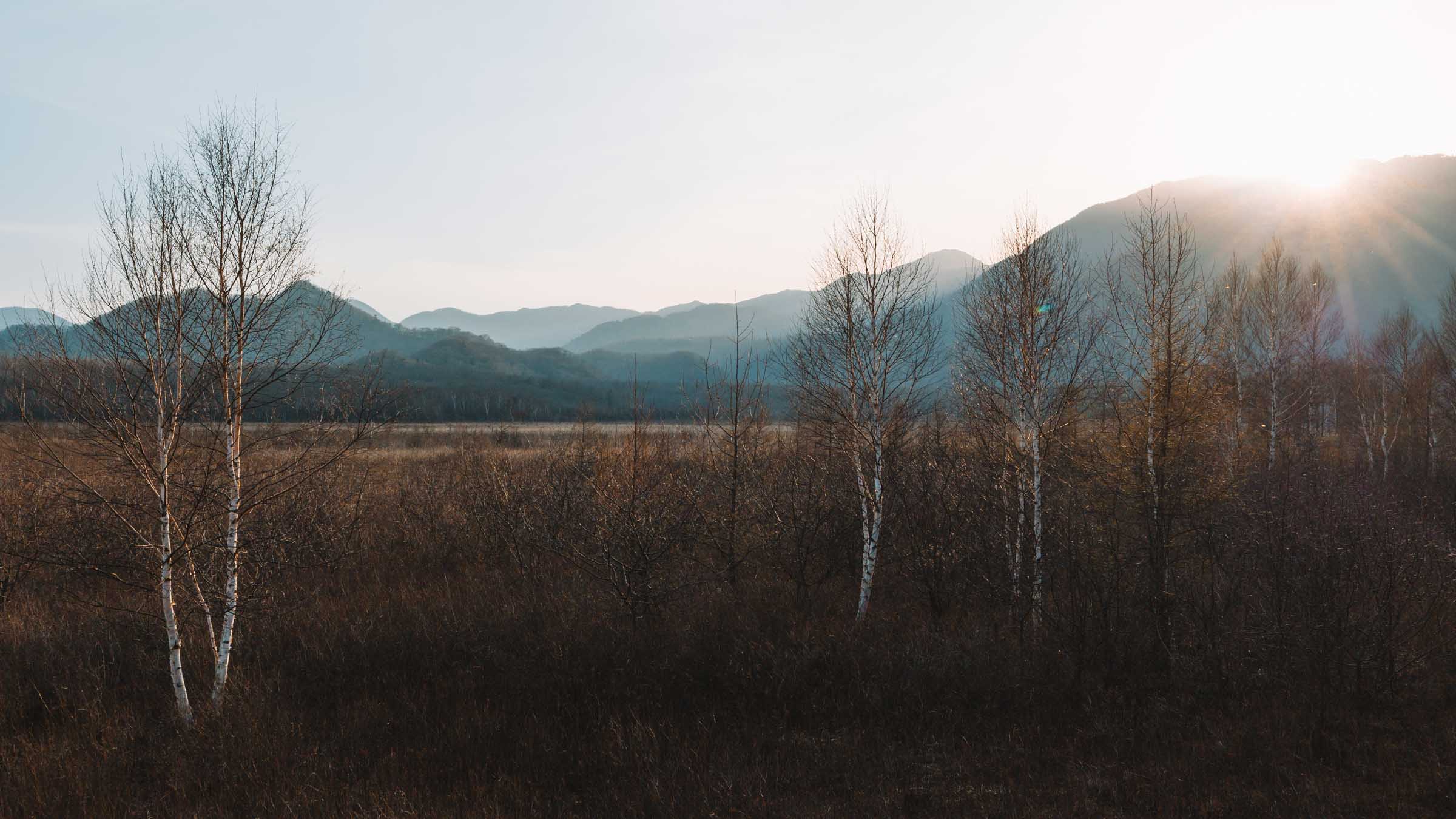
Today, you can explore the area via its network of scenic hiking trails that wind through a grassy plateau. The Senjogahara Nature Trail is made of flat paths and wooden boardwalks that meander through the grasslands. The trail has views of the surrounding mountains and streams, and we saw many birdwatchers and photographers along the trails.
The Senjogahara Marshland is best visited during autumn, when the grasses turn vivid shades of red and yellow, and the larch trees glow with golden hues. Even outside of autumn, the changing landscapes of spring and summer offer their own charm, making Senjogahara a beautiful destination year-round.

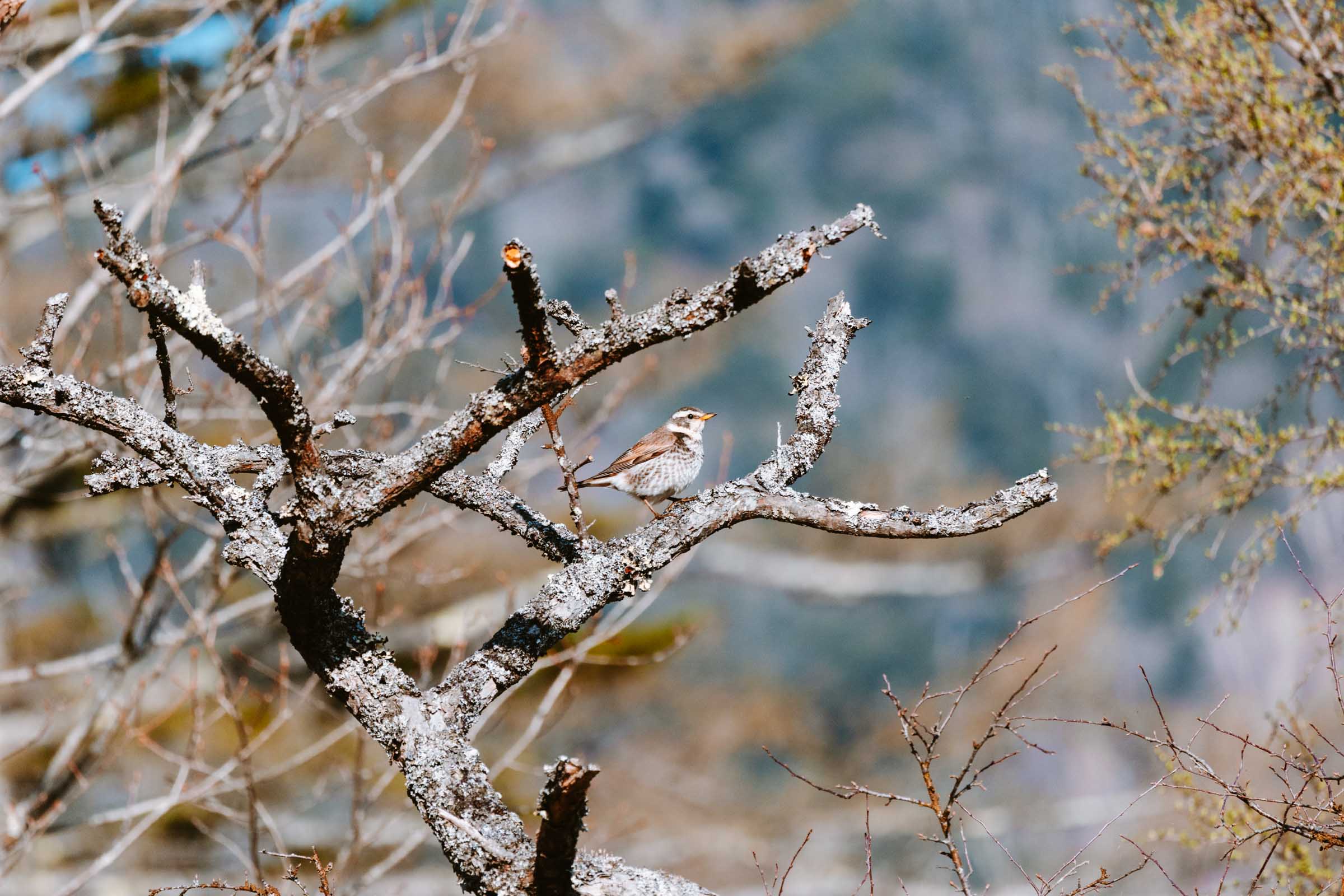
Chuzenji Temple
Lake Chuzenji actually got its name from the Chuzenji Temple, not the other way around. The temple is located on the lake’s eastern shore and was founded in the year 784 by Priest Shodo, who also established Rinnoji Temple, making Chuzenji Temple the second temple in Nikko.
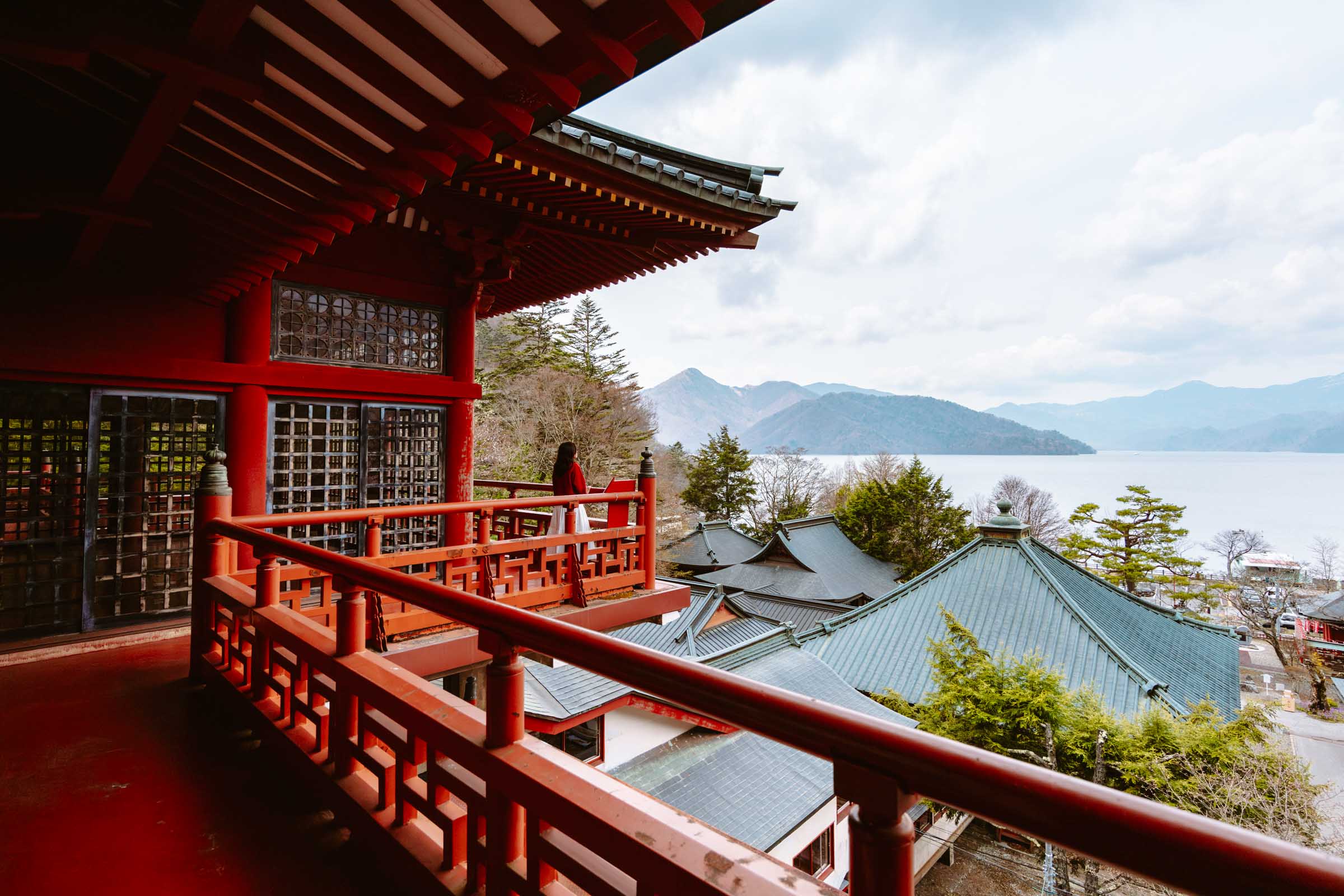
The Chuzenji Temple is famous for its wooden Buddha statue, believed to have been carved by Priest Shodo himself. Tours through the temple are done in an organized manner, and we were directed through the interior of the complex by a guide.
Photography is prohibited in many of the temple’s halls, but once we stepped onto the wooden veranda, we found sweeping views of Lake Chuzenji and the surrounding temple grounds.

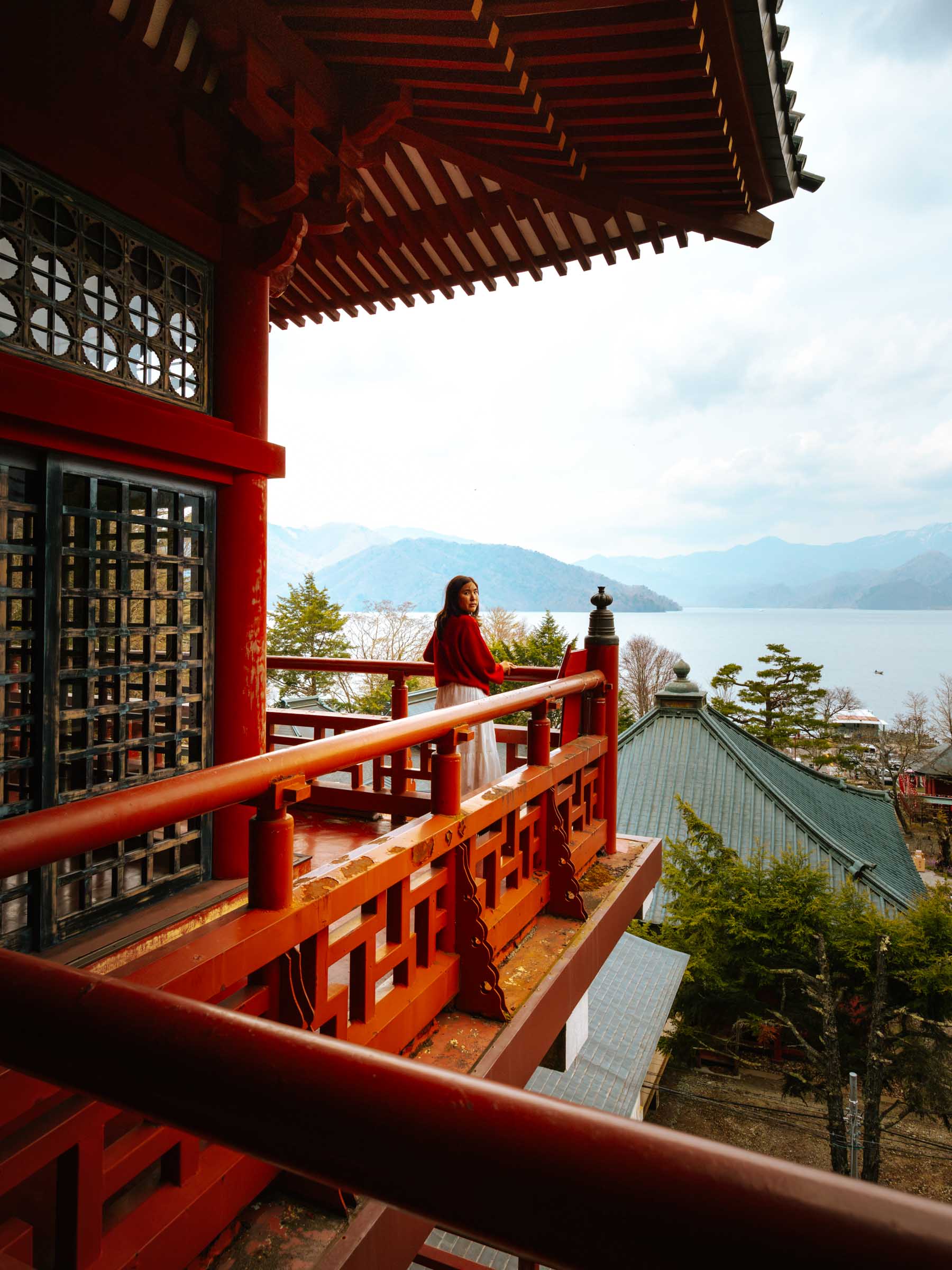
Urami Waterfall
Urami Waterfall was our favorite waterfall in Nikko, and it completely took us by surprise as it’s not well-known.
Getting to Urami Falls is an adventure in itself. It’s tucked deep in a valley above Nikko, and the drive there takes you through areas with no cell signal.
After parking, we walked about 15 minutes along a well-maintained path to reach the waterfall. Along the way, we passed warning signs about potential rockfalls, so we didn’t linger too long on the pathway.

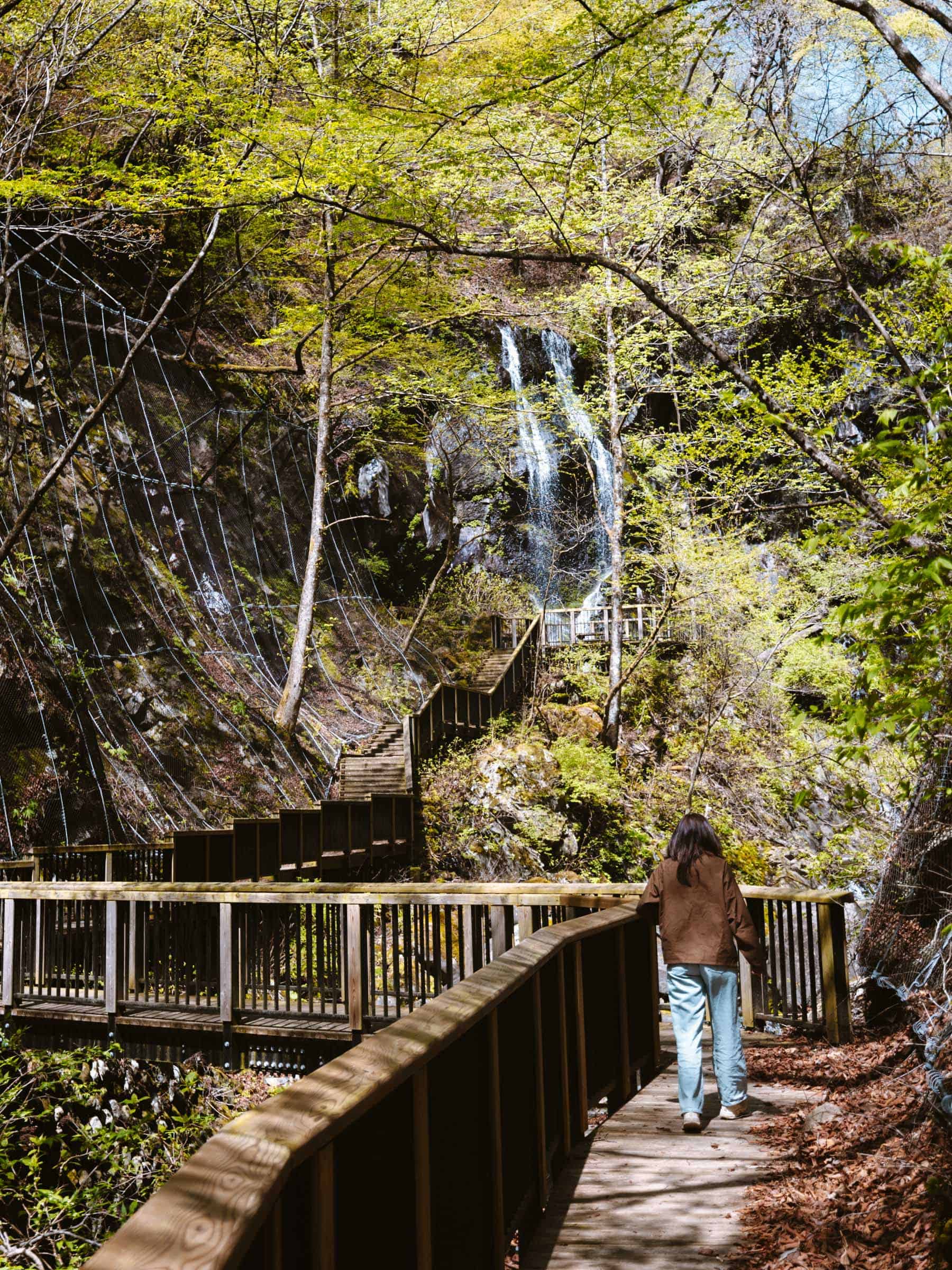

The trail led us to a wooden deck that ended at an observation platform directly in front of the falls. As we sat there, we realized the true beauty of this place. Water wasn’t just cascading from the main waterfall but trickling down the surrounding cliffs as well. It felt like we were enveloped in a watery canyon, and capturing all of the water flows on camera was impossible!
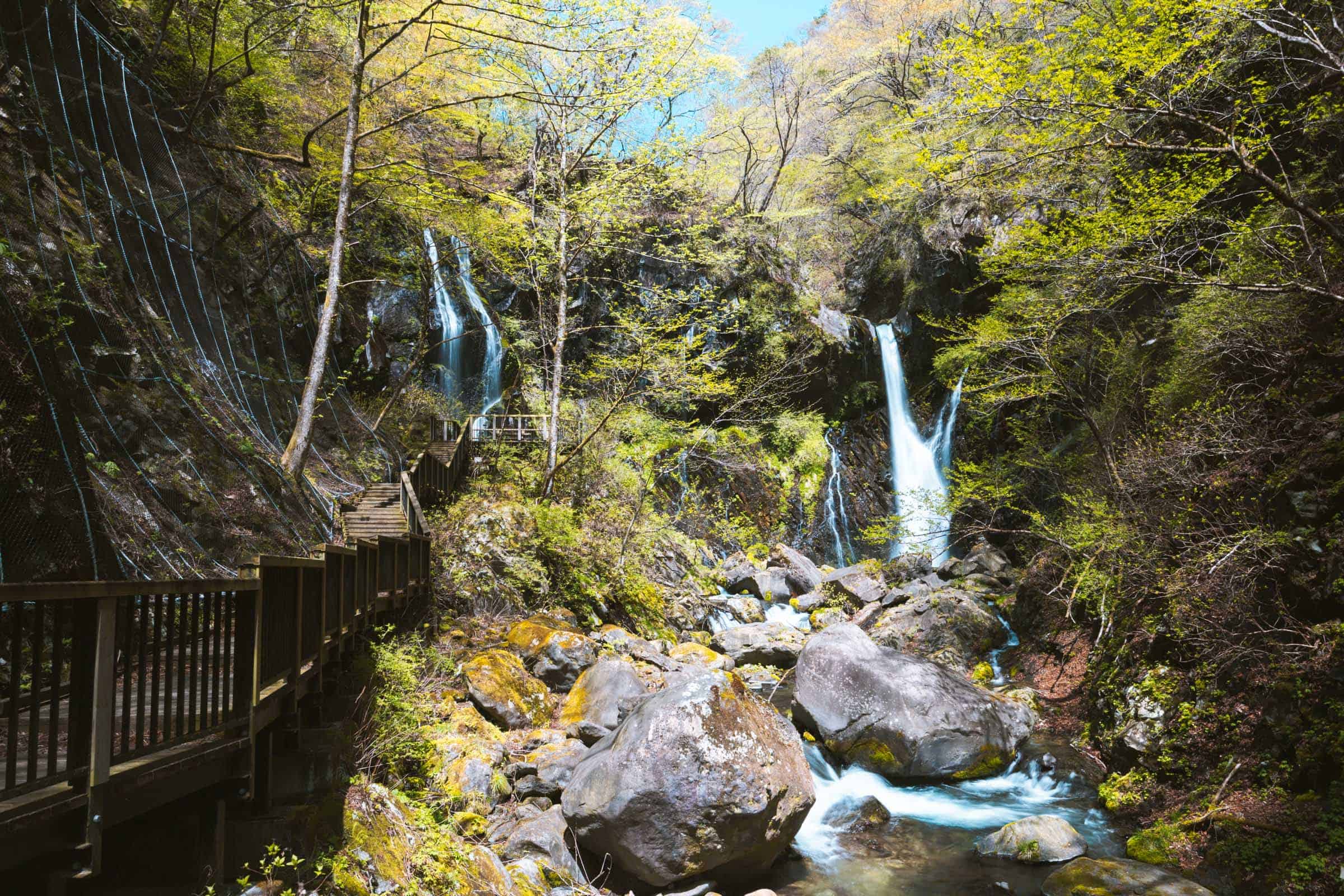
Kinugawa Onsen Town
Kinugawa is a quaint onsen town near Nikko. The town has many onsen hotel options, all located along a scenic river that runs right through the town. Forests surround the area, and the colors of the landscape change beautifully with the seasons.
We opted for a day pass at Hotel Shirakawa Yunokura, and it was wonderful. The hotel had indoor and outdoor baths overlooking the river below. Soaking in the warm waters overlooking the river while surrounded by mountains was an amazing way to relax after a long day of exploring.
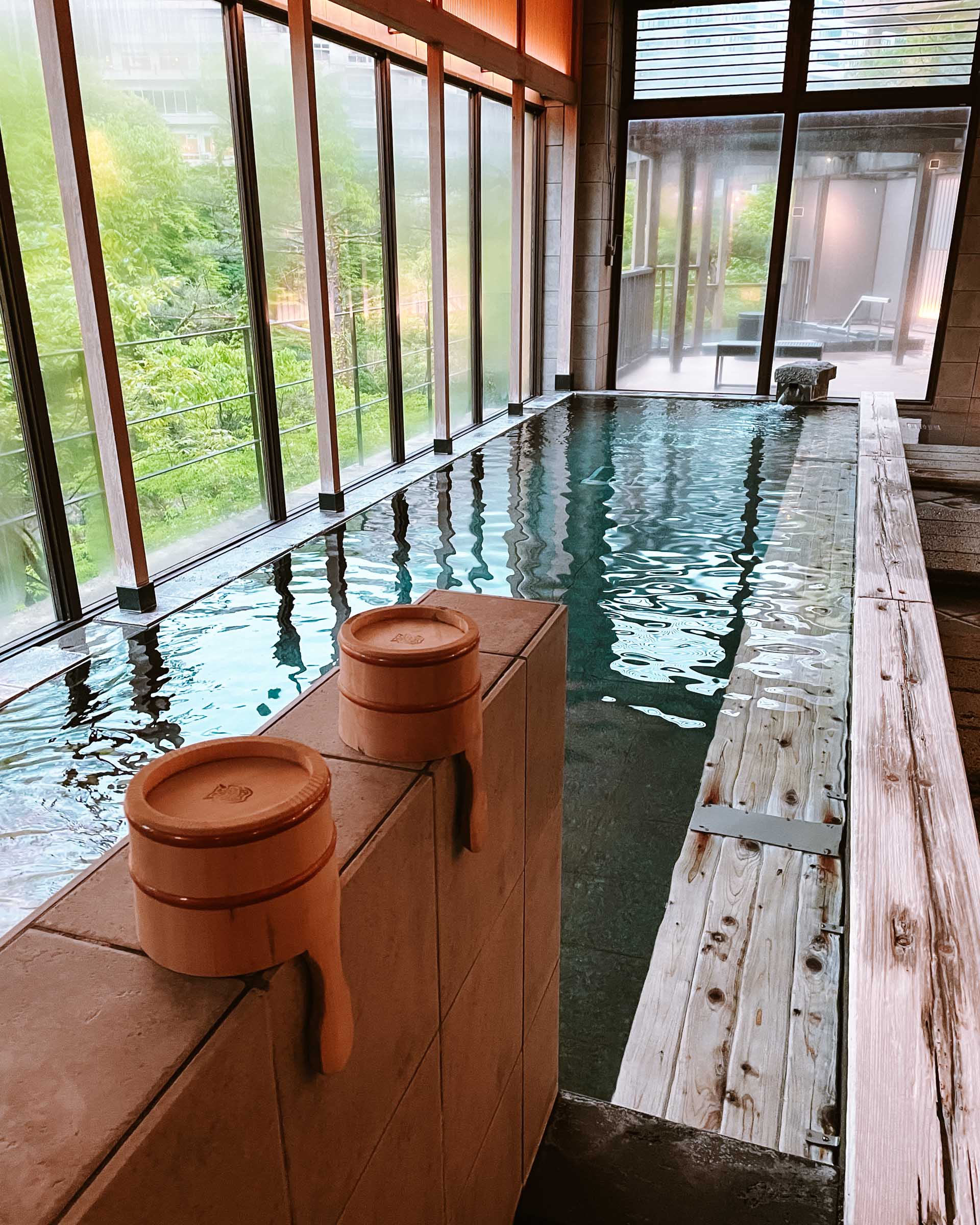
Before heading to the onsen, we took some time to explore the town itself. We found a suspension bridge that crossed the river, which was the perfect way to see the river before heading to the onsen.

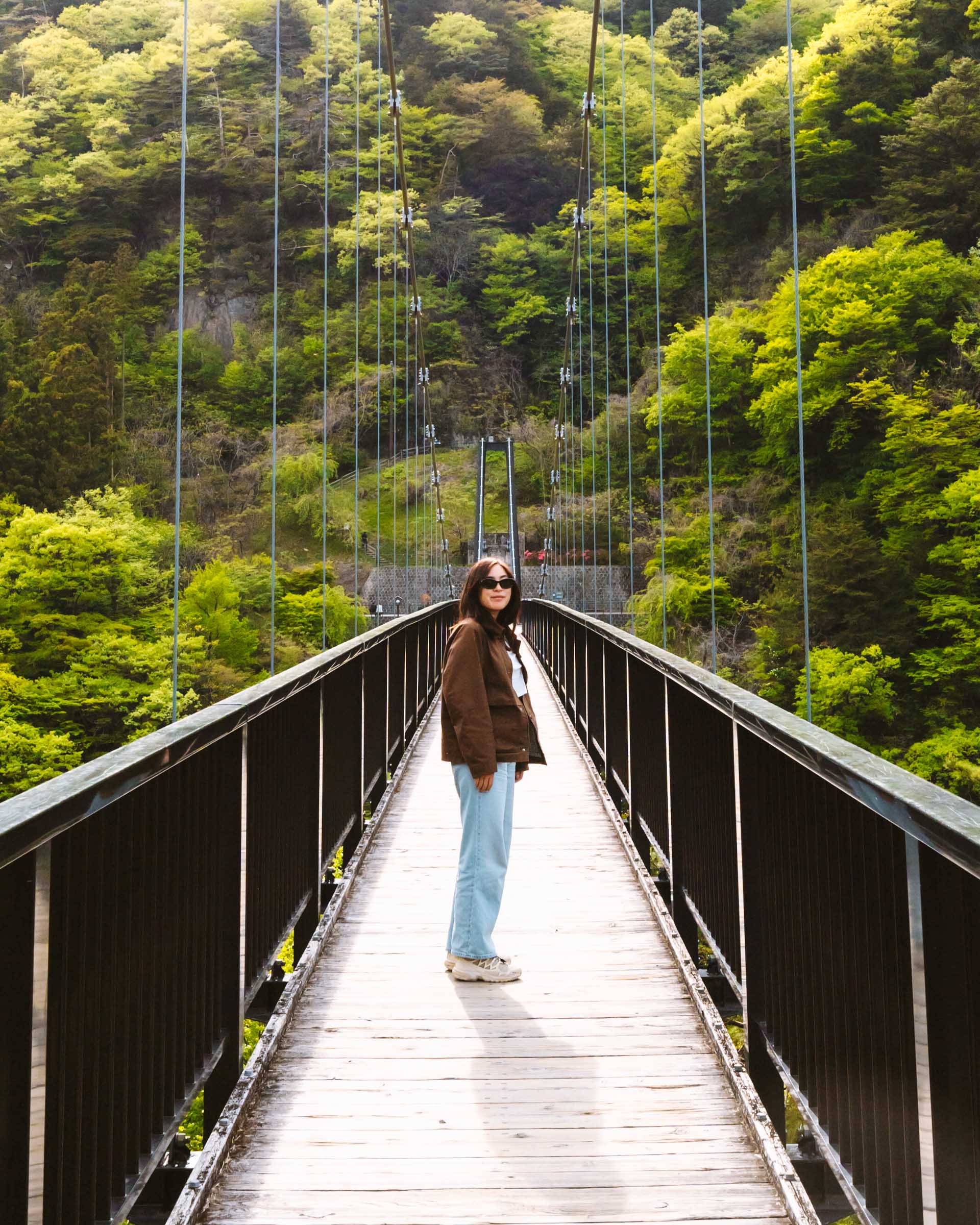
Yudaki Waterfall
Yudaki Waterfall is a massive waterfall cascading down the mountain at a 45-degree angle. Located at the edge of the Senjogahara Marshland, just above Lake Chuzenji, this huge cascade is one of our favorite waterfalls in the Nikko area.
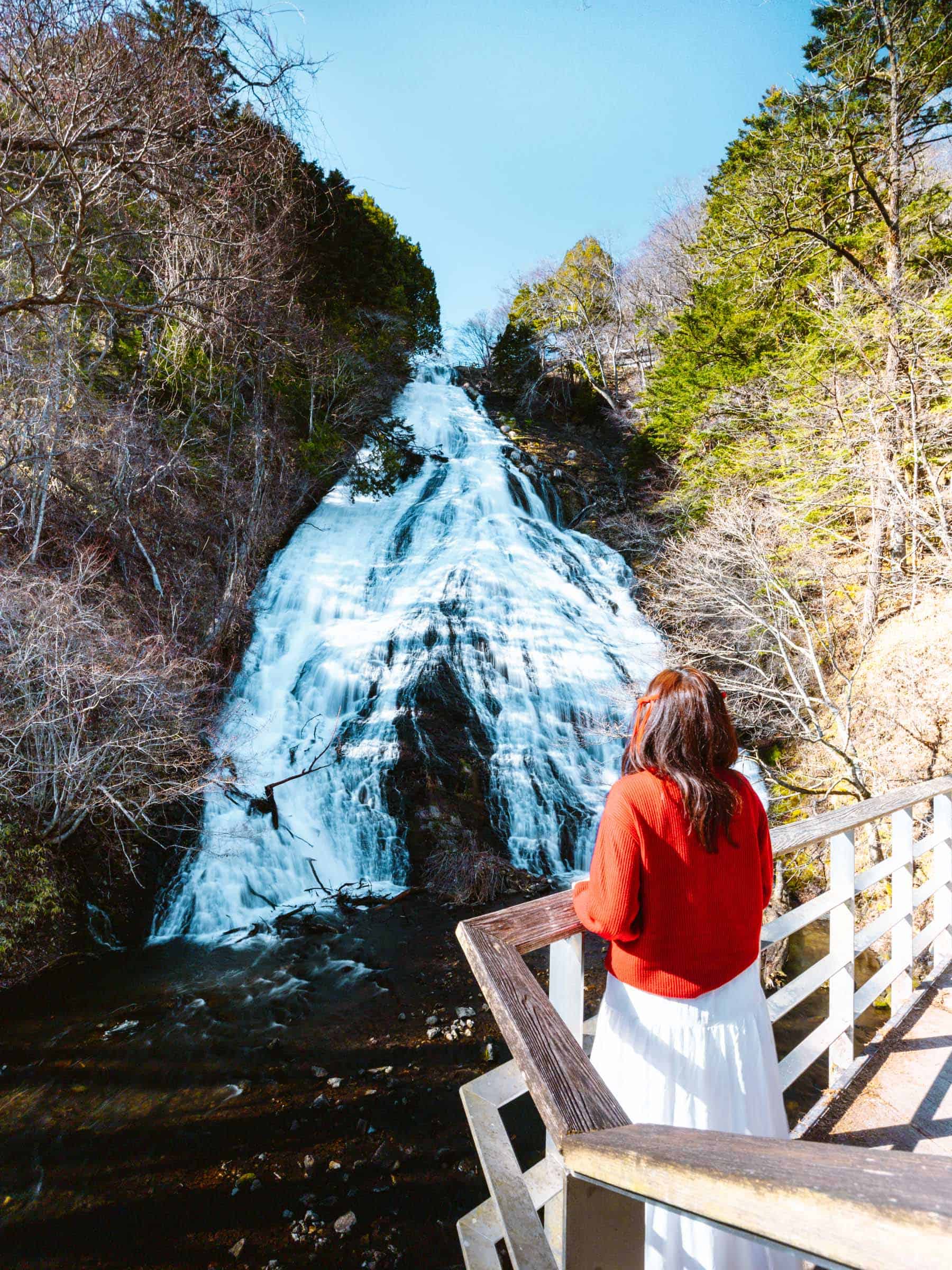
Getting to Yudaki Waterfall is simple. The most convenient option is to drive and park nearby, then take a short walk to the falls. That’s what we did, and we were surprised to find the area mostly empty, with just a few other visitors around. If you’re up for an adventure, you can also reach Yudaki by hiking through the trails that crisscross the Senjogahara Marshland.

At the base of the waterfall is a wooden observation platform with benches so you can relax and take in the view of the waterfall. From Yudaki Waterfall, it’s just a 20-minute walk to nearby Kodaki Waterfall, so we recommend visiting both to fully experience the area.

Kirifuri Plateau
High on the Kirifuri Plateau, the Tenku Kairo, or Sky Corridor, is a unique hiking experience. It’s a 1,445-step staircase up the side of a volcano that rewards you with stunning panoramic views. If that sounds exhausting, it is. But with a steady pace and a few breaks, it’s more manageable than it sounds.
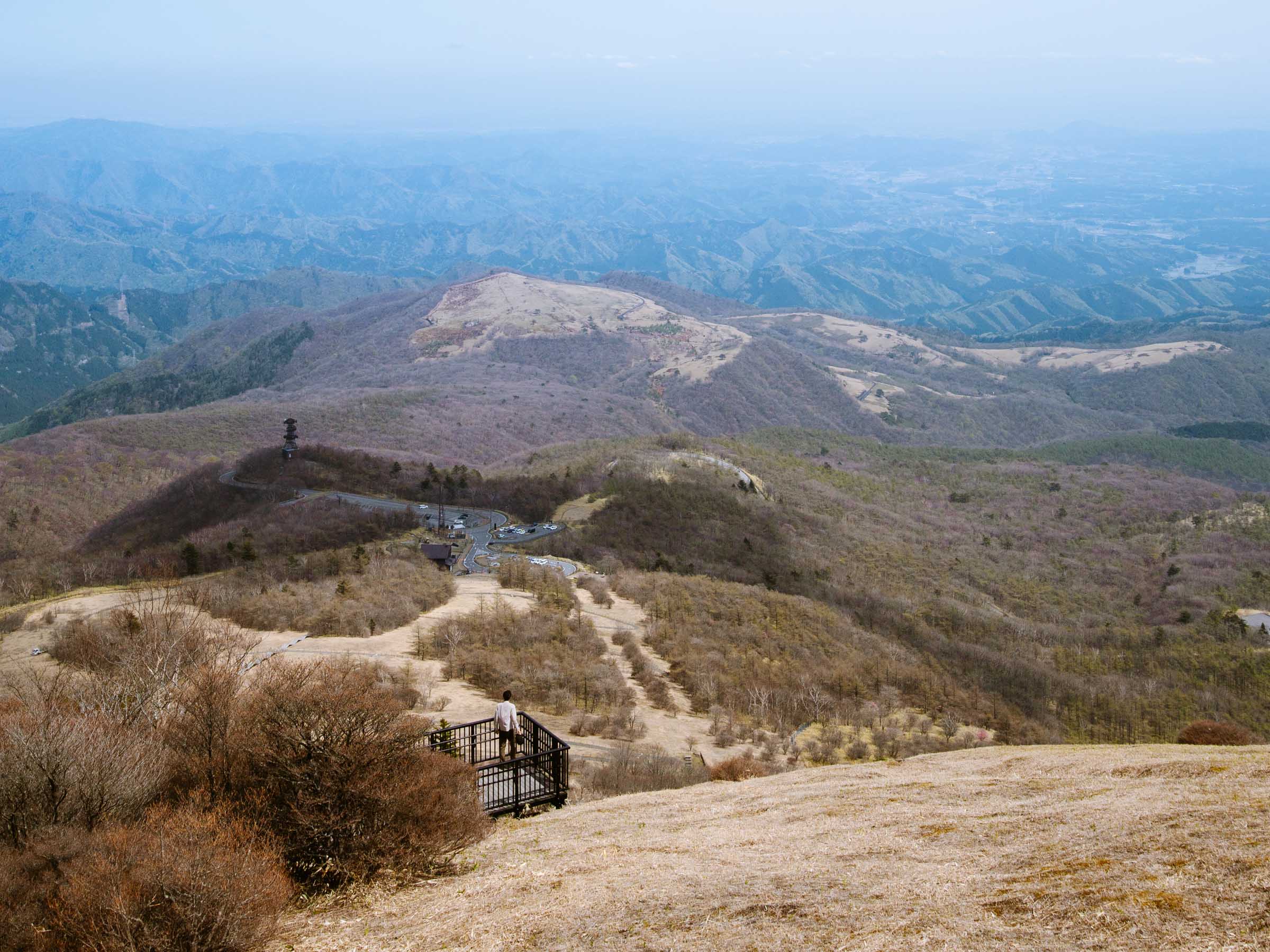
We hiked the stairs in the afternoon, and while the views were incredible, the sun beating down on us made it more challenging. Fortunately, there were several observation decks along the way, so we took those as an opportunity to catch our breath and enjoy the scenery before continuing up the stairs.
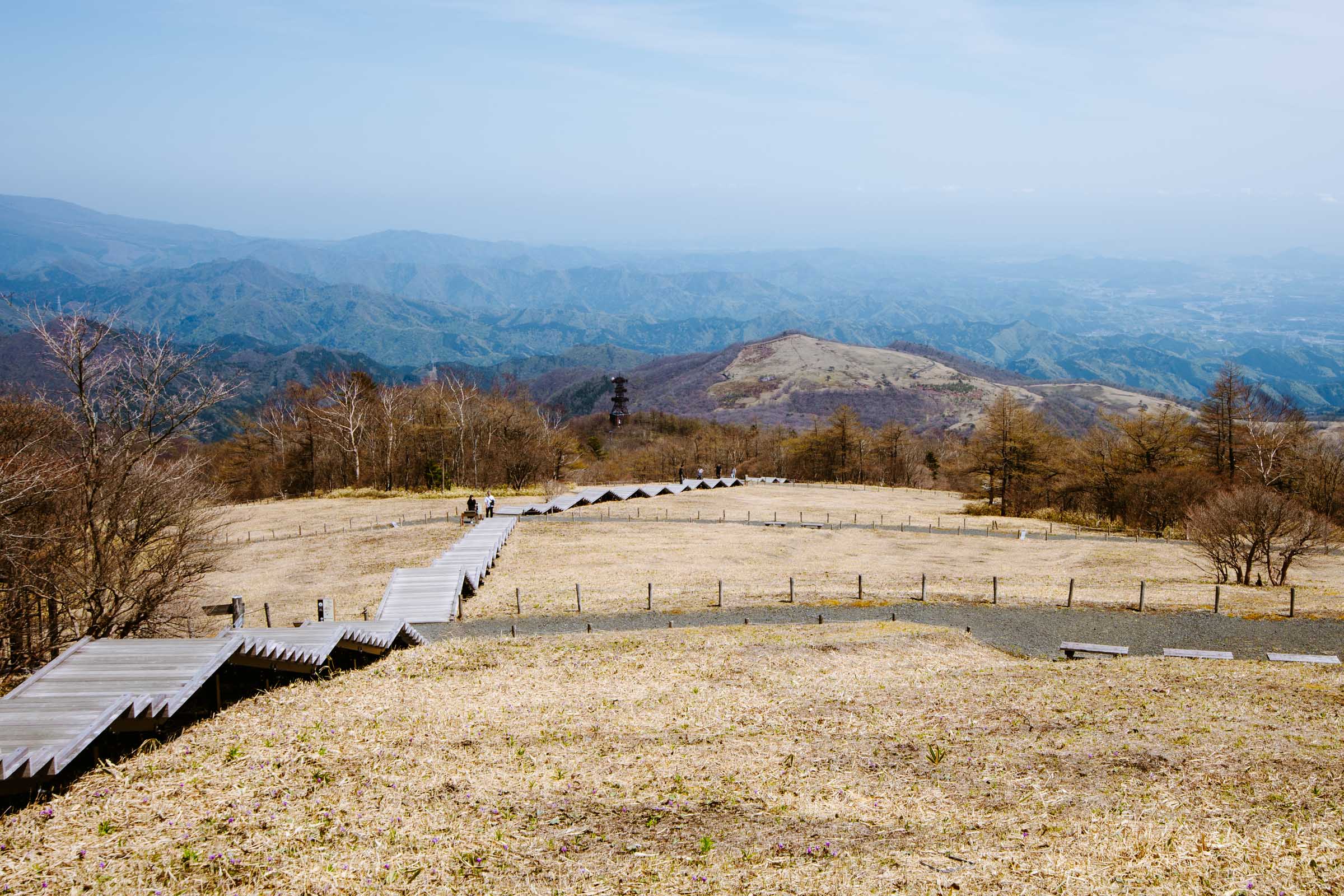

Once we reached the top, the effort paid off with sweeping views of Tochigi Prefecture. It is said that on a clear day, you can see as far as Tokyo and the Pacific Ocean, though it was a bit hazy during our visit. Even so, the sight of distant mountains and the expansive landscape was unforgettable. Maybe it will be clear when you visit!
Kirifuri Waterfall
Kirifuri Waterfall is a massive two-tiered waterfall located just outside of Nikko. Its second tier slopes gently, creating multiple cascades of water that veer off in opposite directions. I’ve never really seen any other waterfall like it.

From the parking lot, it’s about 300 meters to the Kirifuri Waterfall lookout point. The lookout point has an observation deck where you can see the waterfall from above. It’s a unique perspective to a unique waterfall!

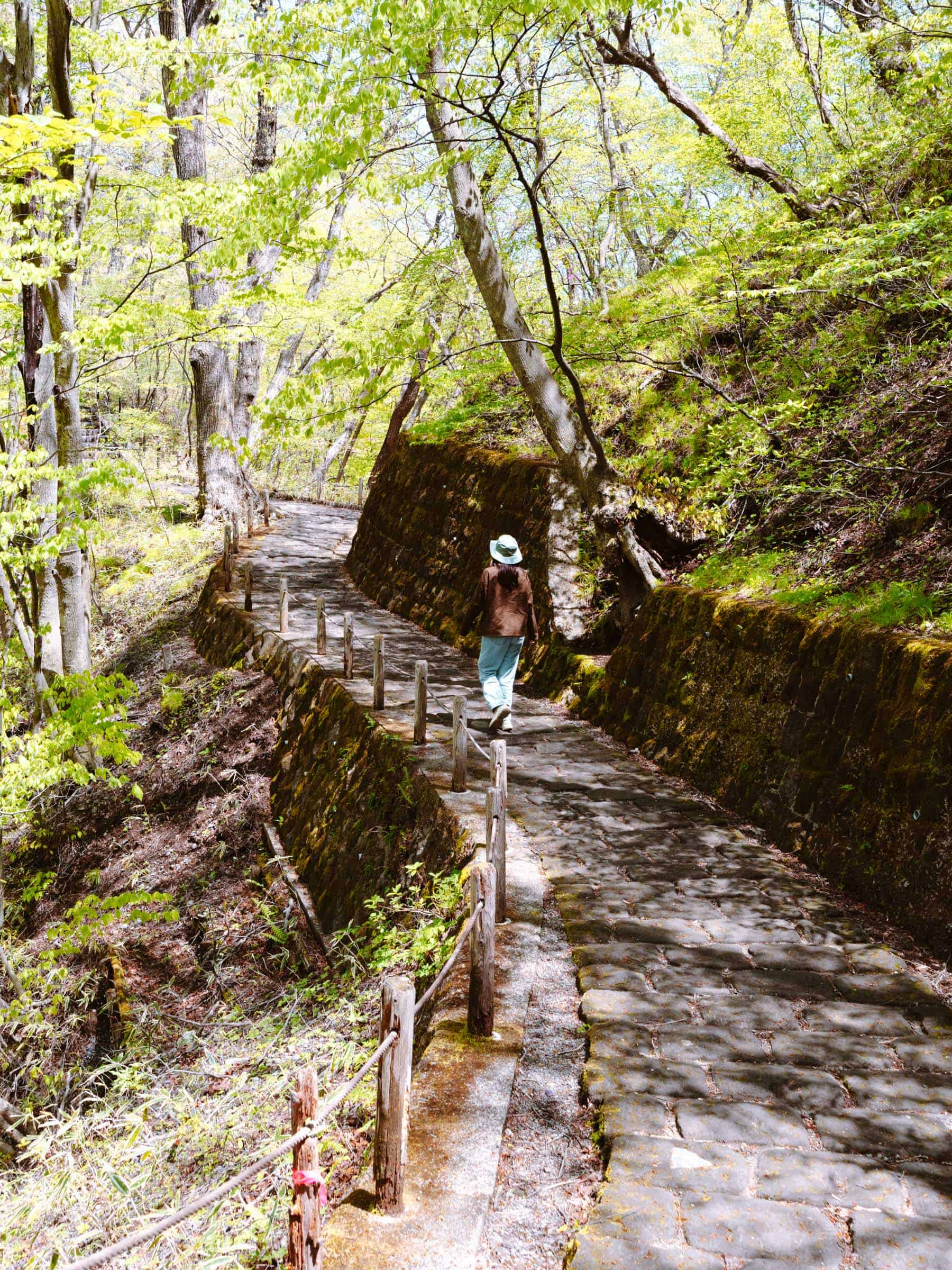

Nikko Botanical Gardens
If you love plants or simply want a relaxing walk, the Nikko Botanical Garden is a wonderful retreat from the busier parts of Nikko. It’s a serene spot to stroll through while enjoying nature’s beauty.
The Nikko Botanical Gardens are located within walking distance of the World Heritage Shrines and Temples and close to Kanmangafuchi Abyss, so the garden can easily be combined with a visit to these places. Walking paths wind through the garden, and you can explore the entire area in about an hour, making it nice for a quick stroll.
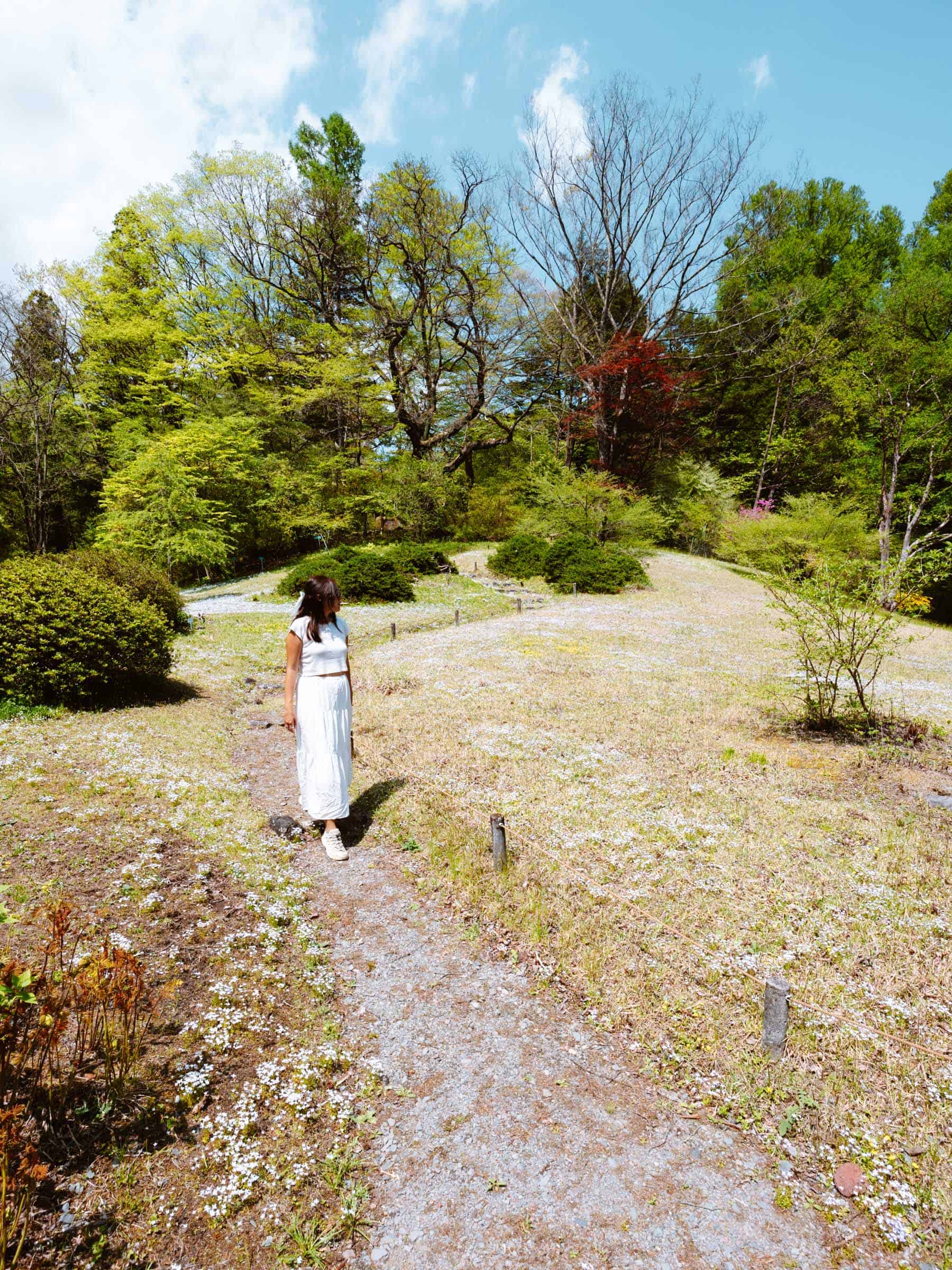
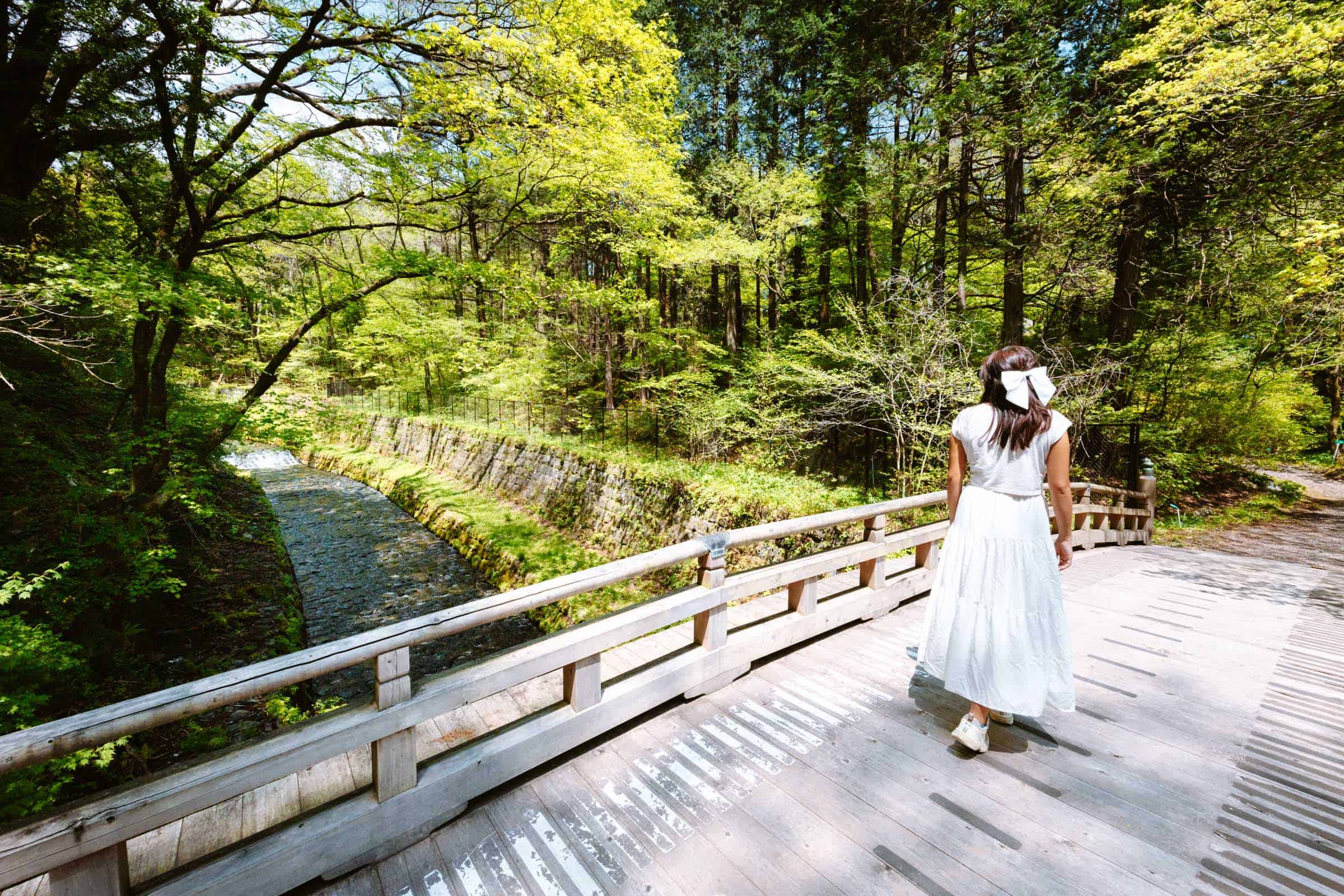

The garden is open from mid-April to November and is home to over 2000 plant species. We visited in the spring and found blooming flowers throughout the garden!
Ryuzu Waterfall
Ryuzu Waterfall is an easy waterfall to get to in Nikko and is completely free to visit. Located near Lake Chuzenji and right off the highway, it’s a quick and fun stop for anyone exploring the area.
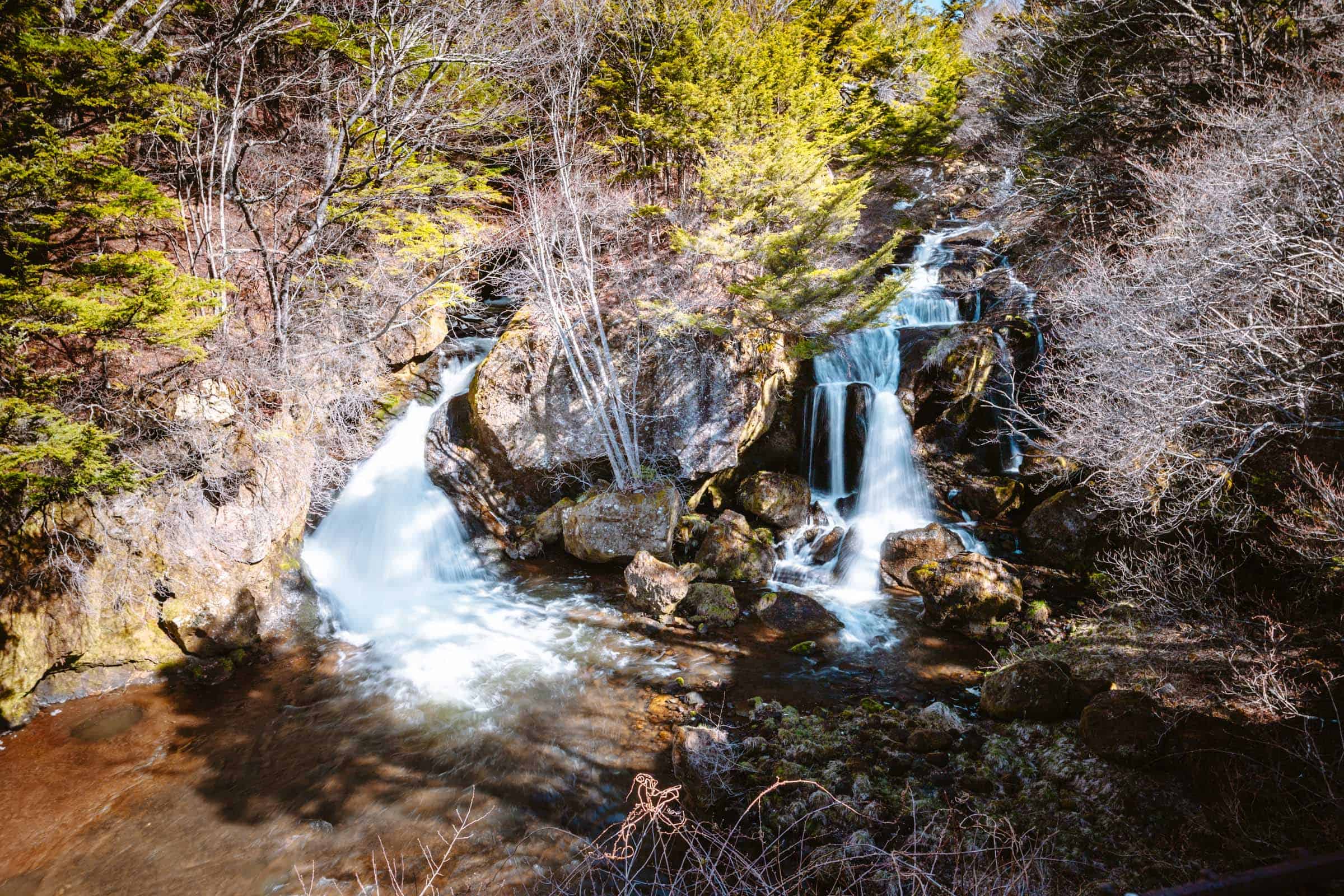
When we first visited Ryuzu Waterfall, we made the mistake of going up the walking path in search of the waterfall. While the path offers views of the rushing rapids upstream, it doesn’t capture the main waterfall and feels a bit underwhelming.
We walked back down the path and found that the best view of Ryuzu Waterfall was actually right near the parking lot! We went up the stairs to the cafe and store and found an observation area with the perfect vantage point to enjoy the twin falls.

Otaki Waterfall
Otaki Waterfall is one of the spots that made me realize that there is epic nature everywhere in Japan. While it’s a bit out of the way from central Nikko, if you have a car and are exploring Nikko National Park, it’s absolutely worth the visit.
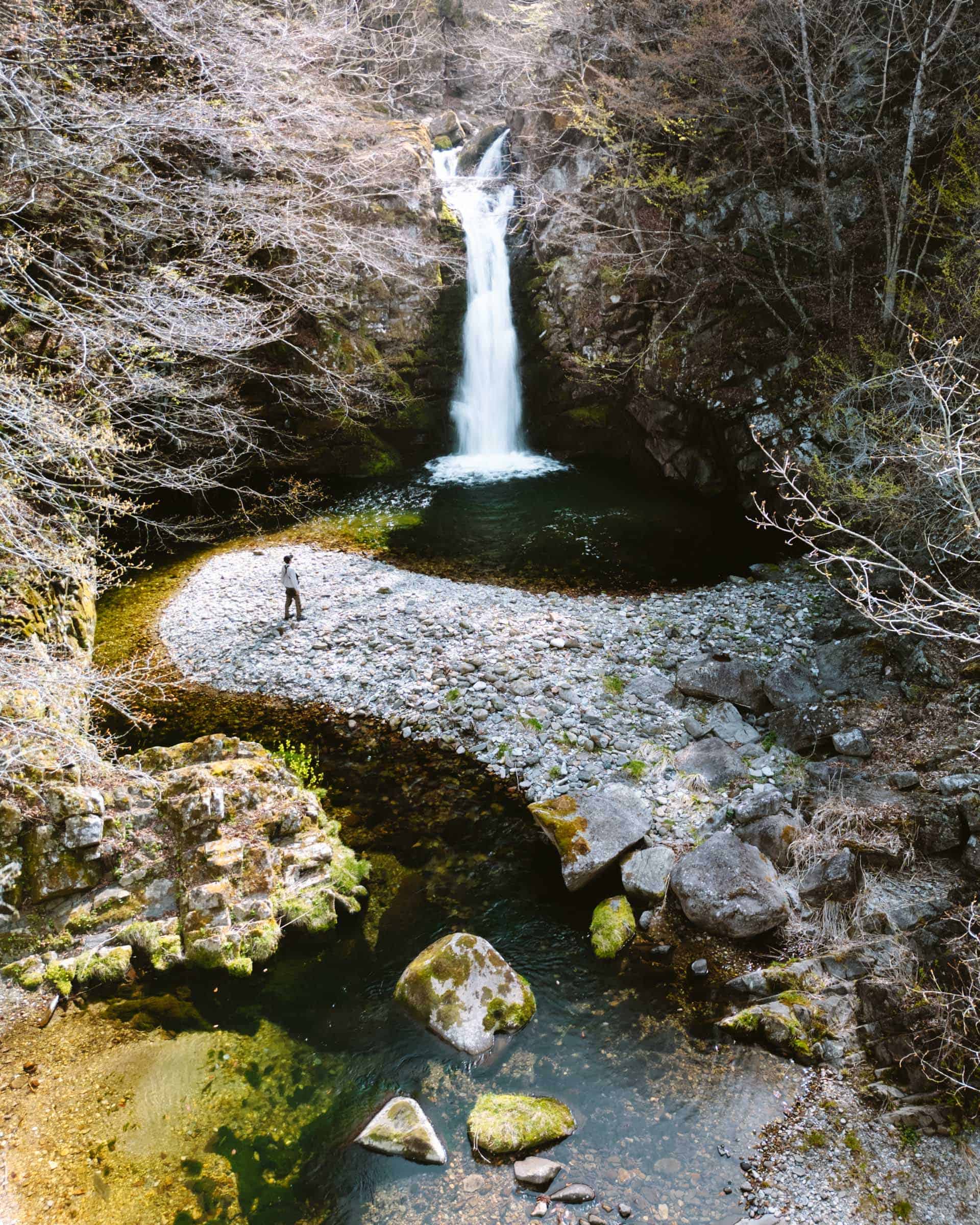
When we arrived at the mapped location for Otaki Falls, we were initially confused since there was no parking lot or clear signage marking the spot. Instead, we found a small pull-off area and some wooden signs pointing toward the trail.
The hike down to the waterfall is short and easy, taking about 10 minutes through a forested path. At the bottom, we reached a small stream with the waterfall rushing down from above.
As I approached the falls, water poured into a crystal-clear stream and flowed down the valley. I couldn’t help but think this would be an awesome place to go camping. It was one of the most pristine pieces of nature I’ve ever witnessed.
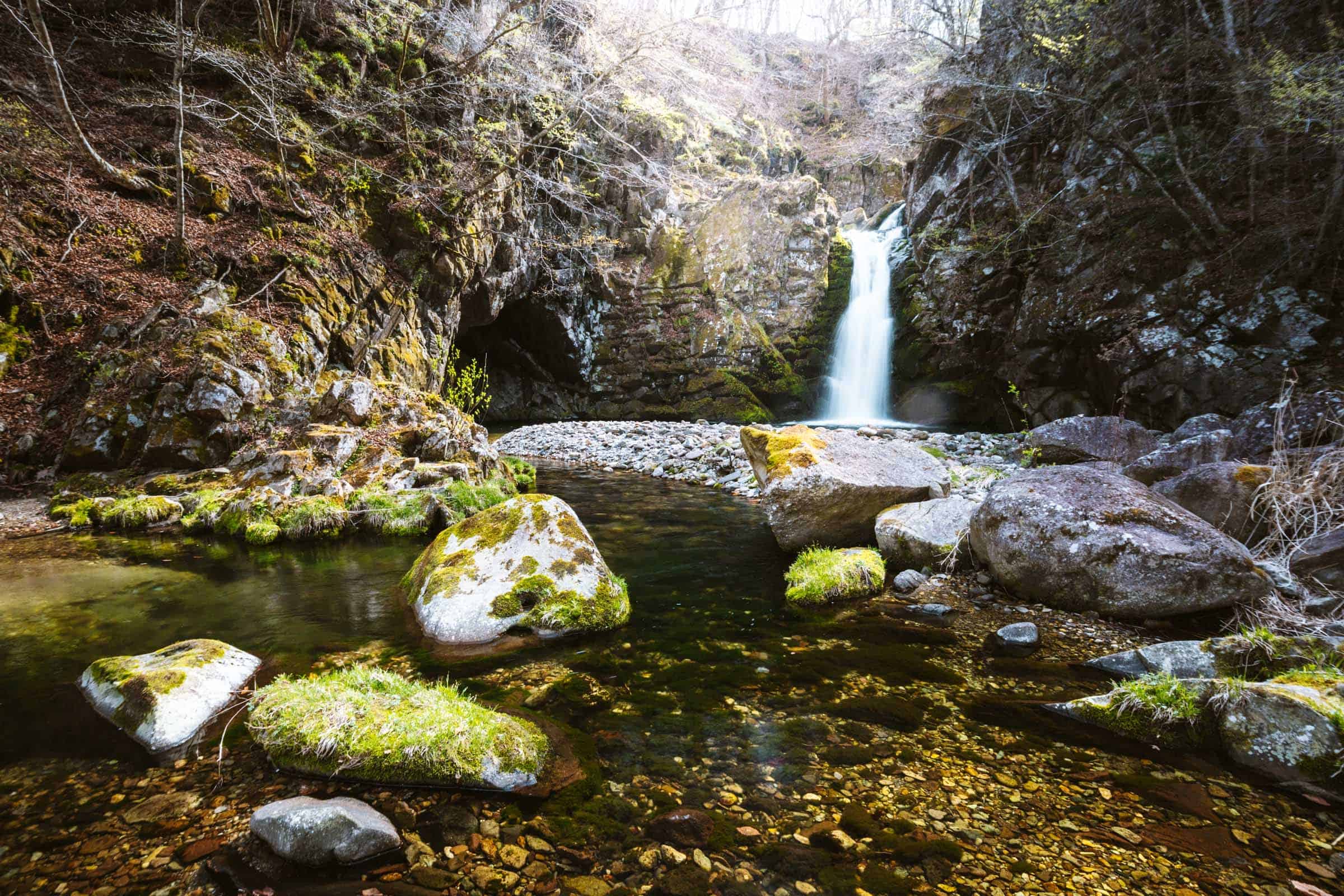
Where to stay in Nikko
There are four areas that we recommend staying in Nikko:
- Central Nikko
- Nikko Station
- Kinugawa Onsen
- Okunikko / Lake Chuzenji
Central Nikko
If you want to make the most of your time in Nikko, staying in Central Nikko near the world heritage shrines and temples is the most convenient option.
Central Nikko gives you easy access to the main sightseeing spots, bus routes, and plenty of dining options. This makes planning your daily adventures more straightforward. However, keep in mind that most accommodations here lean toward the luxury side, so budget-friendly options are limited.

Nikko Station
If you’re looking for convenience without breaking the bank, staying near Nikko Station is a great alternative. This area offers more budget-friendly accommodations, such as guesthouses and small hotels, while keeping you close to transport links. From here, you can hop on buses to the shrines, waterfalls, and other attractions, or walk to some of Nikko’s restaurants and shops.
Kinugawa Onsen
For a more relaxing experience, consider staying in Kinugawa, a nearby onsen town designed with tourists in mind. Kinugawa is known for its large hot spring hotels situated along the river. It’s well-connected to Nikko by bus, so you can enjoy the best of both worlds—soaking in the onsen and exploring Nikko’s attractions.

Okunikko and Lake Chuzenji
If you’re a nature lover, the Lake Chuzenji and the Okunikko area is the perfect base. The area is surrounded by hiking trails, waterfalls, and scenic viewpoints. You could easily spend a couple of days here just exploring the outdoors.
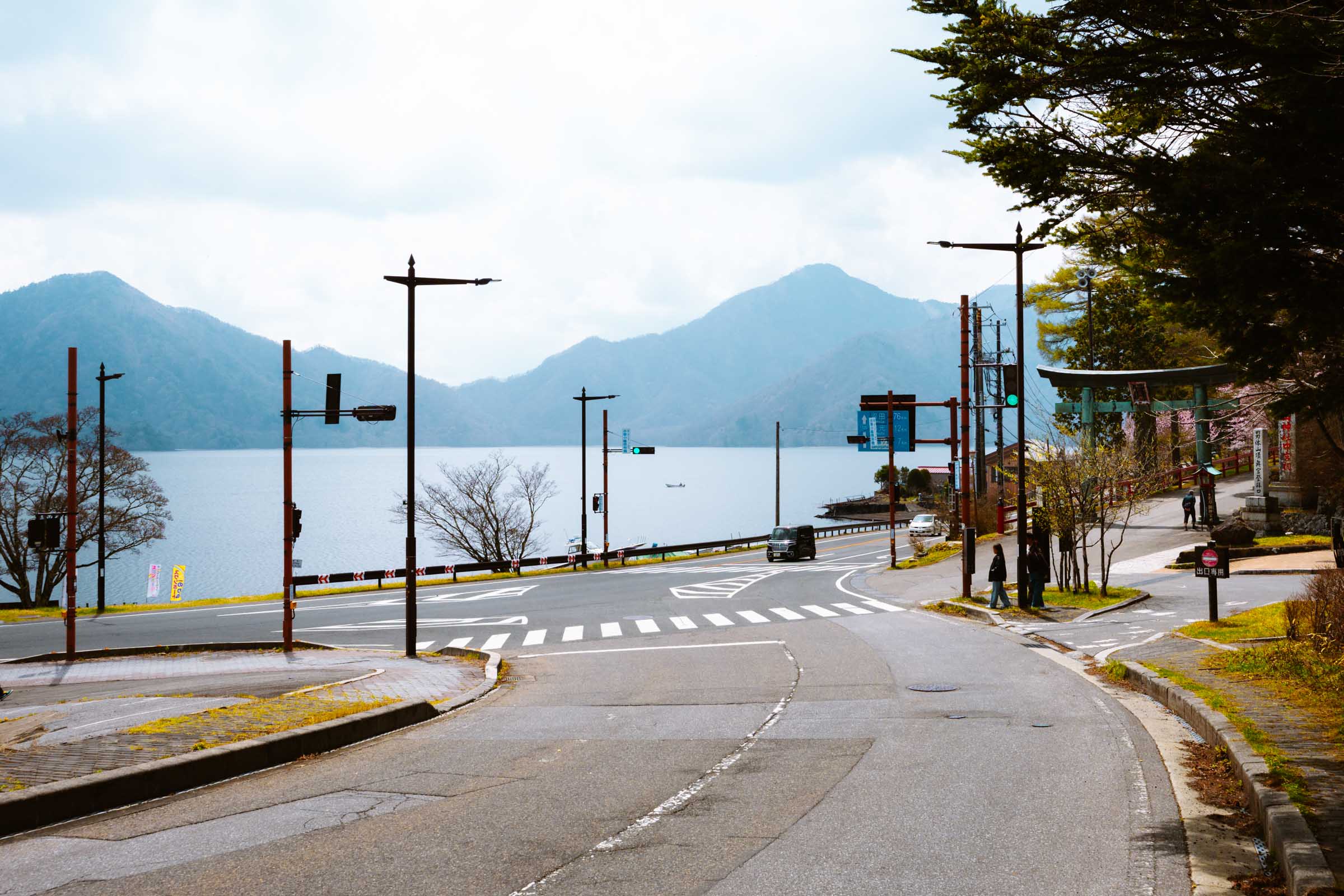
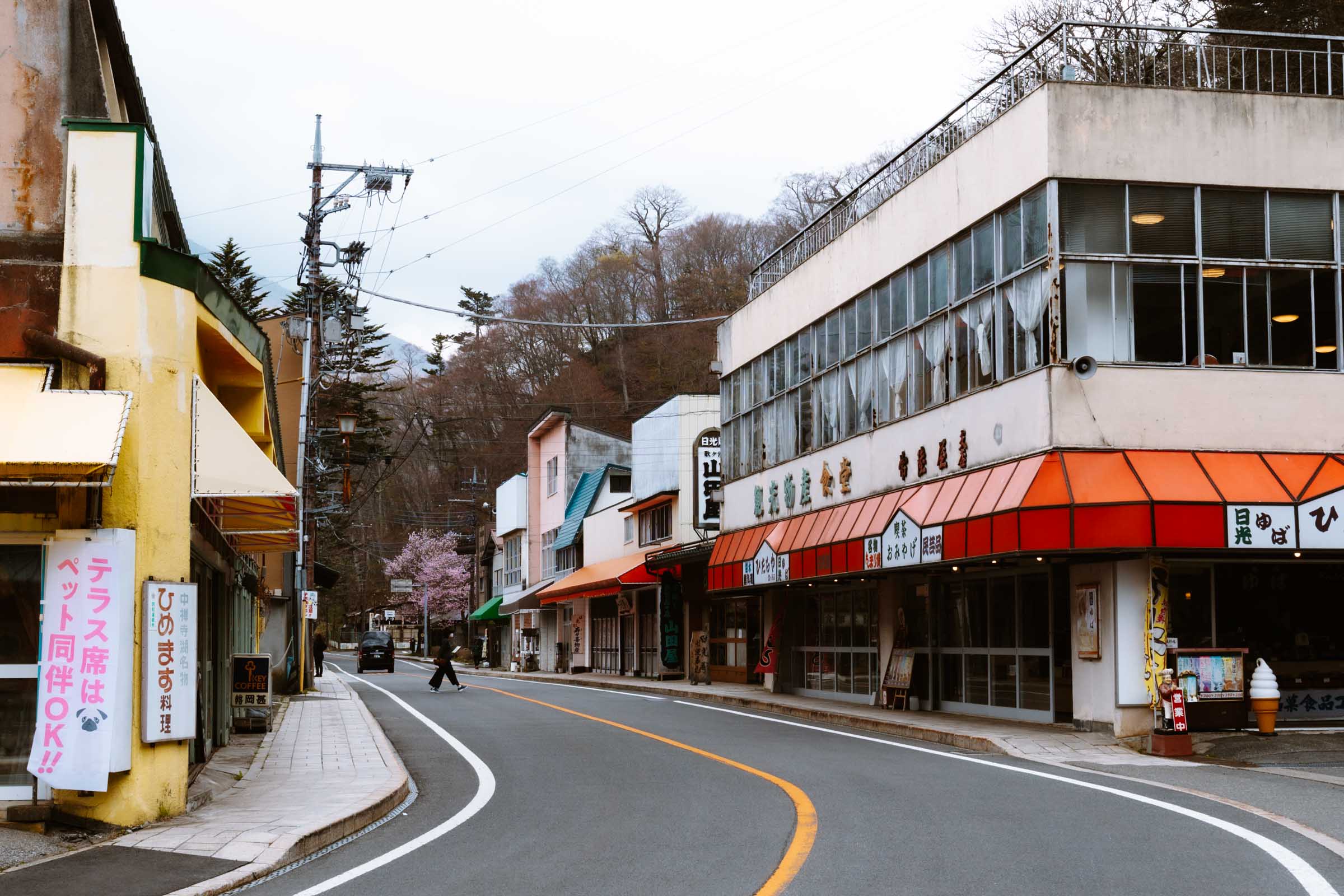
How to Get to Nikko
If you are based in Tokyo you can check out the top-rated Nikko Toshogu One Day Bus Tour from Tokyo, which includes transportation and an English-speaking guide for your day trip to Nikko.
Another way to get to Nikko from Tokyo is to ride the train there. Limited Express trains depart from Shinjuku and Asakusa in Tokyo to Nikko. Your journey there will take about 2 hours.
Once get there, Nikko’s bus system goes around town as often as 15 minutes for the major sightseeing areas. If you want to venture further out, the buses run less frequently but are still manageable with some planning.
In our opinion, the best way to explore Nikko is by car. That’s what we did. Most of the sights around Nikko are not close to each other so the easiest and most stress-free to go and check out everything in Nikko is to drive a car. Most destinations in Nikko have plenty of parking and navigating the roads around Nikko is not difficult. Plus, it’s always nice to have the option to pull over on the side of the road to enjoy Nikko’s mountainous scenery!

When is the best time to visit Nikko?
Nikko is worth visiting year-round, but the most popular time to visit Nikko is during autumn for the fall foliage. During autumn the mountain colors come alive with reds, oranges, and golden yellows.
Winter is the least popular time to visit Nikko. Being a mountainous town, Nikko gets a bit of snow every year, which can make getting around during winter more challenging.
Spring is another popular time to visit Nikko, as cherry blossoms usually bloom around mid-April. We visited Nikko in late April after all the snow had melted.
Nikko’s mountainous climate is much cooler than Japan’s coastal cities, so summer is a popular time to visit for outdoor activities like canoeing.

How many days should you spend in Nikko?
We recommend spending 2-3 days in Nikko. This will give you enough time to visit Nikko’s world heritage temples and shrines, and also venture out to Okunikko to go sightseeing around Lake Chuzenji.

Our Free Nikko Google Maps Locations
Do you need a handy map with all our Nikko locations? We’ve got a Google Map with all the Nikko locations in this post (plus a LOT more). Sign up in the box below and we’ll deliver it right to your inbox, plus our top tips to help you plan your Nikko adventure.

Are You Following Our Nikko Blog Series?
We spent 5 days in Nikko and found so many things to do there — from imperial architecture and cultural immersion to epic waterfalls and outdoor adventures. To help fellow travelers, we’ve put together guides to the best places we found. You can check them out by clicking the links below.
- Our ultimate guide to Nikko: 18 Incredible Things to Do in Nikko: Complete Travel Guide
- How to plan your Nikko trip: 2 Days in Nikko: The Perfect Nikko Itinerary
- Our Nikko waterfalls guide: 7 Best Waterfalls in Nikko: Complete Guide
- Kanmangafuchi Abyss is the cutest little off-the-beaten-path spot in Nikko
- The Nikko Tamozawa Imperial Villa is a beautifully preserved retreat of Japan’s imperial family, now open as a museum

I hope you enjoyed our guide to all the things to do in Nikko! Feel free to leave a comment below if you have any questions 🐸



